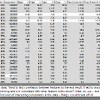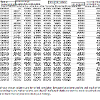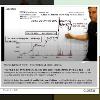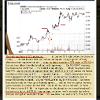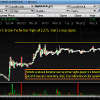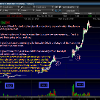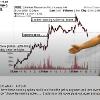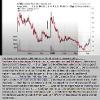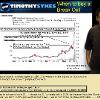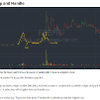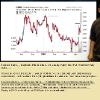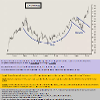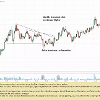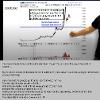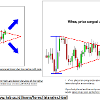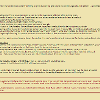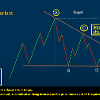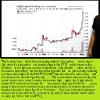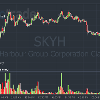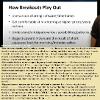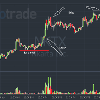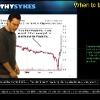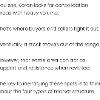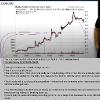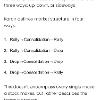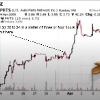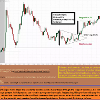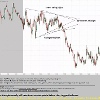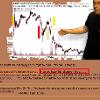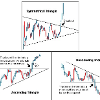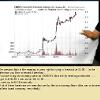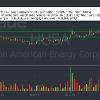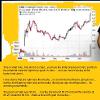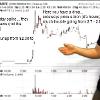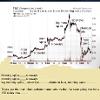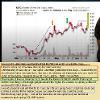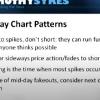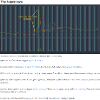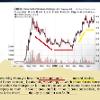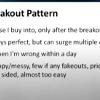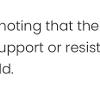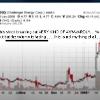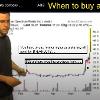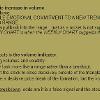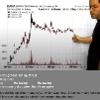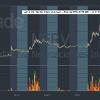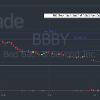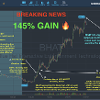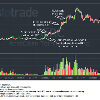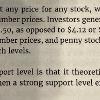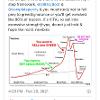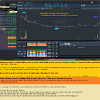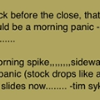TRACKING STATS ------ Min 51:20----Min 1:12:45 ----- PART 4 ---- TRADING TECHNIQUES ....
BREAK | BREAK OUTS | SPIKES | #BREAKOUTS | #BREAK-OUTS | BREAK-OUTS
Min 00:00:01 (1.5 hrs) --------- AFTERNOON BREAKOUT [pattern] ---------- Min 2:20 - Min 13 (afternoon breakout criteria) -------- Min 13 (how to play the Breakout) ----- Trading Tickers 2 – Chapter 8.....
Min 4 ------- take notes on this and update my SPREADSHEETS (yahooFinance and finviz are almost always outdated; look either in SEC filings, or use BLOOMBERG.COM (one site that does a very good job updating SHARE COUNTS when there are offerings, etc.)! -Grittani ----- Trading Tickers 2 – Chapter 8............
Min 27 ------------ look at the biggest % gainers in the past 5 DAYS! ---- "Spikeability" DVD --------- Part 2 ------------ https://members.timothysykes.
https://www.youtube.com/watch?
https://www.youtube.com/watch?
https://www.youtube.com/watch?
https://www.youtube.com/watch?
Min 6:24:00 (2 hours) ------ LONGING major daily BREAKOUTS (Nasdaq/listed) ------- TRADING TICKERS 1 --- Part 2 -------- https://members.timothysykes.com/lessons/trading-tickers-1-part-2 ........
Min 00:00:01 (1.5 hrs) --------- AFTERNOON BREAKOUT [pattern] ---------- Min 2:20 - Min 13 (afternoon breakout criteria) -------- Min 13 (how to play the Breakout) ----- Trading Tickers 2 – Chapter 8.....
Min 6 (3 mins) — LONGING breakouts (Nasdaq/listed) ---------------- Trading Tickers 2 -- Chapter 4........
Min 2:40 (2 mins) — LONGING OTC multiday Breakouts ----------- Trading Tickers 2 -- Chapter 4.......
AFTERNOON BREAKOUT DATA TRACKING --------- Min 1:15:30 — MIN 1:45:00 — how to optimize AFTERNOON BREAKOUT spreadsheet for evaluation— TT2 — Chapter 3..........
Min 1:01:45 — TT2 ---- Chapter 3 —— TRACKING AFTERNOON BREAKOUTS SPECIFICALLY! — and how to CALCULATE ALL SORTS OF DYNAMICS!!!!!!!!!!! Grittani gives formulas and ways of doing everything! ——Take notes on calculating the percent gain potential I have in a afternoon breakout setup! SETUP MY AFTERNOON BREAKOUTS SPREADSHEET JUST AS GRITTANI HAS HIS SETUP HERE....
Min 1:01:00 --------- how to create FORMULAS to generate further evaluations/analysis of data that was tracked --------- CHAPTER 3 -------- TRADING TICKERS 2 --------- https://members.timothysykes.com/lessons/trading-tickers-2-chapter-3/ ............
snip Min 18:50 (afternoon breakout)-------- TAKE NOTES! Into my statistics
Min 18:50 (afternoon breakout)-------- TAKE NOTES! Into my statistics  Google sheets !--------- TT2 (trading tickers 2) ------- Chapter 3...............
Google sheets !--------- TT2 (trading tickers 2) ------- Chapter 3...............
 Min 18:50 (afternoon breakout)-------- TAKE NOTES! Into my statistics
Min 18:50 (afternoon breakout)-------- TAKE NOTES! Into my statistics  Google sheets !--------- TT2 (trading tickers 2) ------- Chapter 3...............
Google sheets !--------- TT2 (trading tickers 2) ------- Chapter 3...............Min 18 ------ Roland Wolf on buying breakouts and risk management when playing breakouts ---- Trading Tickers really helped him understand a better method for risk mgmt when buying breakouts ----- www.youtube.com/watch?v=cjc2yzqh9yw ........!!!!!!!
Whether it's earnings or technical breakouts....... stocks can have legs.... 2-4 days worth....... -Sykes
With low-priced stocks -- do not be looking to dip-buy... look to buy breakouts...... -Sykes
The main reason why people lose money is because of greed and poor risk management... -[trader who makes $250k a yr trading]
Min 19:55 ---- there are million types of breakouts ------ hold a bit longer ---- scale out slowly -------- there's a way to win in trading, you just need to find it for yourself ----- www.youtube.com/watch?v=klGtzh0vsRI ......... #Tuohey
THE KEY TO CATCH THE STOCK BREAKING OUT RIGHT BEFORE IT DOES -------- www.youtube.com/watch?v=7drv99rvVnA............Min 6 especially......... KEEP EYE OUT ON ----- high volume. read stock history before tech breakout to see which have legs (in the stock's historical chart). GREAT if there is good news. if it is a hot sector. big volume. earnings winners. a new billionaire investor.
Breakout traders --- Perhaps the most predictable traders in the market. These traders buy penny stocks when it's near premarket high, intraday high, and previous day high. Breakout trading pattern is the most commonly taught strategy in many day trading chat rooms. Thus the crowded buying could cause penny stock breakouts to fail.
TIM SYKES ON SOMETIMES CHASING STOCKS AT MARKET OPEN
Some of these plays that really run, right near the open, it really pays off to be a little speculative early on. . if you wait, you might just miss the big run-up (at market open). . . When you have these fast runners, sometimes you don't get a dip, so i risk it a little bit when i think that it deserves that risk. . i don't chase everything (usually i should wait for a dip), but the big percent gain was there. . . -sykes
Min 26 – Min 30:40 ------ Jackaroo likes trading stuff that has massive price action and is a huge scam because the price action just makes more sense to him | buying breakouts on a strong market (stock spikes, pulls back, then buying it on the breakout #scams price action is most clean for breakouts) | shorting stocks that are way too over-extended (if it is up 3-5 days in a row then I look to short it when it’s falling off the cliff) | panic dip buying is a little bit tricky but if it’s a natural type selling pressure due to stop losses and not massive dilution then usually there’s a good bounce --- I just traded these patterns the last 5 years and really grew my account … THE MORE VOLUME THERE IS THE GREATER THE OPPORTUNITY (THE LESS RISK THERE IS) BECAUSE THEN THERE IS NO WORRY ABOUT SLIPPAGE; VOLUME IS JACKAROO’S #1 INDICATOR, THEN TECHNICAL LEVELS (HISTORY OF THE STOCK’S CLEAN PERFORMANCE OR IS IT SUPER CHOPPY?) --- DAY CANDLES THAT AREN’T VERY WICKY BUT HAVE SOLID CANDLE BODIES ------- www.youtube.com/watch?app=desktop&v=cj4X2fgAuHk …….
Min 21 --------- how to buy these breakouts ---------- www.youtube.com/watch?v=3NK6dzW_mBo ..........
HOW TO SETUP MY BREAKOUTS SPREADSHEET!!!!!!!!!!!
Min 1:01:00 --------- how to create FORMULAS to generate further evaluations/analysis of data that was tracked for BREAKOUTS specifically --------- CHAPTER 3 -------- TRADING TICKERS 2 --------- https://members.timothysykes.com/lessons/trading-tickers-2-chapter-3 ............
Min 1:12:00 --------- how to calculate what RISK % i should set for my STOP LOSS when trading *volatile* BREAKOUTS --------- CHAPTER 3 -------- TRADING TICKERS 2 --------- https://members.timothysykes.com/lessons/trading-tickers-2-chapter-3 ............
Categorize my statistics based on Trading Tickers 1 (PART 1) DVD in it's last 4 minutes! how he does it there is exactly how i gotta track stats and summarize them then into categories into a separate stat sheet!
read---------www.timothysykes.com/
There are lots more false breakouts, perhaps because there are more computer-based trend followers.
Here’s the deal:
Not all breakouts will work out.
In fact, half or more of your breakout trades are likely to fail.
However, it doesn’t mean trading breakouts is a losing strategy, far from it.
Remember, it’s not how often you win that’s important.
It’s how much you win when you’re right and how much you lose when you’re wrong — that’s what matters.
Also… If you want to increase your odds of capturing a trend, you must trade across different markets. This includes Forex, Indices, Energy, Metals, Agriculture, etc. - RICHARD DENNIS
- Does the stock have good news?
- How has the stock reacted to good news historically? (explain the consistent next 5-10 day candles following the stock's supernova/spiking)
If you start chasing stocks, you will get bitten. . . . sacrifice the battle (miss a trade) to win the war.... Most people are not meticulous enough..... -[Sykes]
DIFFERENT BREAKOUTS ----- Min 20 ----- a list of all of the different types of breakouts ----------- Experiment with the different types of breakouts ------ www.youtube.com/watch?v=Maf5Lhy53UU .......
Higher and higher lows LEADS to a stock's spiking (likelihood)..... meaning the lows, when higher in price (support level) than it's previous lows, the stock will likely spike at a certain point..... -Sykes
With any trade that breaks a premarket high, we always risk a fakeout.
More often than not, shares will poke through the high and then quickly fall away.
That’s why the timing component is so crucial here.
It’s what made the difference.
Every time a stock runs up into a resistance level, give it 5-15 minutes to tell you which way it wants to go.
If shares spikXe through and quickly fall away, you know the morning trade is a no-go.
If shares hold near that level for 15 minutes and VWAP starts to creep up, now you’ve got a shot at pushing higher.
It’s also important to analyze the volume.
Higher volume means more conviction. When a stock makes a high-volume tail candle at the premarket highs, it will have a heck of a time trying to break through again.
Also, keep an eye on VWAP.
_________________________________________________________________________________________________________________________
SHORT SQUEEZES
THE RECIPE FOR A SHORT-SQUEEZE: no one is selling shares (shown on level 2) ... thus, you have short's getting squeezed ... you have buy-ins ... you have lack of a volume ... and you have uptrending price action..... -Tim sykes
Every single short is a potential short-squeeze. When the short-squeeze happens, it's a potential buy..... -Sykes
Min 2 ----- the jest of a short-squeeze (being self fulfilling prophecy) --------- www.youtube.com/watch?v=DO4fMijqb-c ........... #JordanBelfort
Min 5:20 ------- on how a short-squeeze works --- Graham Stephan -------- www.youtube.com/watch?v=8YrnTbzuOWM ..........
___________________________________________________________________________________________________________
Short sellers love to lurk near the top of each stock. Shorting penny stocks are a very commonly taught trading strategy. But the immature shorts could sometimes be victims of a penny stock short squeeze. To get out of their position, short sellers have to buy to cover. That's why during penny stock intraday break outs the squeeze can go parabolic because the shorts are trapped [buying (to cover), thus increasing the stock's price and spike].
SHORT SQUEEZES --- BIO stocks make for the best squeezes, when short-sellers hold on to that little glimmer of hope. . . -Matt Monaco
Min 1:24 ---- Importance of volume breakouts ---------- www.youtube.com/watch?v=rq4jthS3nTA..............
Min 14 ------------ on TRADING TICKERS still having relevant patterns (ones that don't work so much: new promo releases (chapter 5) | listed(Nasdaq) stock breakouts are still kind of hit or miss.......GRITTANI tips ----- https://youtu.be/Vz0aoeT5bmA ..........
Min 20:40 --------- OTCs come and go (the multi-breakouts), they're not always hot. It's good to expand to the Listed stocks (NASDAQ) if you want to trade full-time....Roland Wolf ----- tips and affirmations --- www.youtube.com/watch?v=dAanETbgqNM ..........
Min 16 ------ Grittani strategies he still uses the most now are::::::::: buying OTC breakouts | over-extended gapdowns....... <------- Grittani's favorite 2 patterns to play...... https://youtu.be/Vz0aoeT5bmA ..
QUESTION: When would you buy when you see a #1 for the framework show up?
KYLE WILLIAMS: I don't like buying till #2-#3 during a breakout.
QUESTION: why?
KYLE WILLIAMS: its just early, very hard telling a supernova will take place being that early.
MAXEDOUTTRADES: that's a guessing game trying to find the next runner before it actually runs, its much easier to short overextended runners and current runners that have consolidated and break out
CATCHING THE Pattern #1 and Pattern #2 OF THE FRAMEWORK
Min 10 - end ------- look at consolidation on low volume, with lots of LEVEL 2 asks (relative to a smaller volume level) ----- and if it breaks, it has potential to spike up ----- www.youtube.com/watch?v=O9QRWjtxvnY .......
DIFFERENT TYPES OF BREAKOUTS
Min 19:30 ---------- there are a million types of breakouts, so for me finding the one that works best for me, that's when I started seeing success ------ www.youtube.com/watch?v=klGtzh0vsRI .........
Min 24:30 --------- if i'm going for a breakout play, i don't want to enter at the breakout level...... ideally I'm selling into the high of day breakout area.... Find those VWAP areas ------ www.youtube.com/watch?v=klGtzh0vsRI .........
THE FRONT SIDE OF THE STOCK'S MOVE USUALLY HAPPENS CONTINUALLY WITHIN 5 DAYS........ UNLESS A NEW CATALYST COMES INTO PLAY AFTER DAY 5.......... OTHERWISE, BY DAY 6, DAY 7, DAY 8, THE STOCK IS ON IT'S BACKSIDE AND IS A SHORT........... -Bohen commentary
A STOCK IS A MULTI-DAY RUNNER, when a stock hangs around. It might be down a lot from yesterday’s premarket highs… But it’s still up roughly 150% over the last two days. [IN OTHER WORDS, a stock is considered a multi-day runner when it hangs around... Meaning, if it is still up a substantial %gain from when it first started it's run, then it is considered a multi-day runner, even if it looks like it's tanked / dipped from it's highs (i.e. and it's still up in % overall from when it first spiked)].
SPIKING
When a stock breaks out to new highs (and it's heavily shorted) (and there are new buy-ins), the odds favor upside (spiking).... -Sykes
Some trades / patterns take longer to setup, and frankly I like the ones that take longer because you don't have to be in and out in seconds. A multi-month earnings winner, a multi-month breakout with huge volume is something that is sustainable for weeks. These are safer plays than some low-float bullshit that comes crashing after a day or two. -Sykes
Even if a stock breaks-out by a few cents a share, it needs to hold that breakout, it needs to confirm it, otherwise it could be a fake-out...... -Sykes
Focus on breakouts. Focus on stocks that hold support. Or shorting stocks that break support. Stay away from choppy stocks. Only trade when there's a great setup. -Tim sykes
THE BEST PLAYS JUMP OUT AT YOU
- The best plays don't happen every day, but when they do, they are GIMMIES
- Have the patience to wait for plays with MULTIPLE indicators in your favor
- Buy stocks breaking out to new highs, with good news, in a hot sector, that's not over-extended
- Short stocks that are scams, up a ton due to manipulation and promotion, bound to come crashing down, not a question of "if" but when..
Buy a stock on consolidation only when the consolidation lasts a long time. Otherwise, a short-term consolidation will result into a fake-out (a fake-out breakout)....
Min 43 — focus on MULTI DAY BREAK OUTS starting out — watch all sykes Video lessons (4,000+), on multi day break outs — and DIP BUYING — https://m.youtube.com/watch?v=z9ZQ7-30TxE ......
[Best place to buy is...]
The best place to enter a long position aka] buying a stock is at a major key level of support.
Reason this is so important for beginners is because you have a CLEAR KEY LEVEL to base your risk. I'll try to give you an example through text..."wish me luck".
Lets say stock AB is at $1.50/share in the afternoon. You notice in the morning it spiked from 1.00 to 1.50 and since then has been consolidating between 1.50 and 1.35 (Key support).
Since it has based off 1.35 all afternoon its safe to assume this will be a good level to risk. There are two sides of the coin when it comes to long, you can either buy the dip (Meaning near 1.35).
OR
You can buy the breakout above 1.50 risking 1.35 (hence bigger range of risk).
There are many ways to trade. In some cases I would probably personally prefer the breakout rather than the dip but I know some who love DIP BUYING! -B the Story
Breakouts ------ they're easy to do, they're easy to spot, you just have to practice them........ #PATTERN...... -B The Story
I don't like buying stocks that spike and then lose all of their gains. I would rather them spike and lose SOME OF THEIR GAINS, and then they just have to be within shooting distance of their highs... I don't look to buy just any random weak stocks no matter how much they have recently spiked.. -Tim sykes #PLAYS #PATTERNS #BREAKOUTS
FACTORS TO LOOK FOR WHEN CONSIDERING BUYING A STOCK
-- is the market uptrending or dipping? Is the tape losing steam or increasing in upside momentum?
-- is there a press release?
-- is there a clear breakout?
-- is it holding near it's highs (support levels)?
-- is there high volume?
-----a lot of trading is being patient, watching the stock play out on your screen, ... and then sniping it right at the right moment.... . . . When shorts come into play, that leads to a hard drop in the stock price. . . ..
I focus on listed stocks, buying breakouts, anything under $10....... i'm basically a breakout buyer....... it's essentially the same OTC strategy, just adopted for the listed stocks....... -Matt Monaco
For OTCs, you still have to pay commissions ($5 or so)........ but it's well worth it..... When you see the breakouts and multi-day runs these things go on. . . -Matt Monaco
Min 36:45 --------- great patterns Sykes touches on, for me to replicate also | [first green day OTC: former runner, nice intraday breakout, nice multi-week breakout] -------- https://youtu.be/K39L5Ay0g-0 ............
Min 26:30 ----- The breakout pattern is what this guy depended on (to make him profits)....... back then there would only be 2-3 clean breakouts a month...... nowadays (2021) there would be breakouts every day----- www.youtube.com/watch?v=DbH7UYNNY08 ......
Min 32:30 ------ BIG PIECE OF ADVICE: only trade and track OTC and listed breakouts..... save yourself the heartache and failures of other plays...... do not take days off, watch the market everyday, everything will become instinctual and you'll be able to take advantage ----- www.youtube.com/watch?v=DbH7UYNNY08 ........
Min 25:50 - end------- on the scanners Jackaroo uses ---------- I'm never there capturing the morning spike unless it's already setup (if a stock is ripping up, i'll look for a play after it's had it's run)---------- www.youtube.com/watch?v=G1lHUwugw-A ............ I wait for these OTC breakouts for days, man #Stalks with Patience -[JACKAROO]
Min 18 -------- have patience for breakouts, but scalp other trades ----------- Tim Grittani ----------- www.youtube.com/watch?v=9BqMy3hPVXU ..............
Min 42 ---------- WHEN STARTING AT THE BEGINNING OF MY JOURNEY, focus on MULTI DAY BREAKOUTS at the beginning of my trading journey to grow my account... follow by then learning DIP buys...... (Tim grittani advice)!.... GRITTANI INTERVIEW ---------- https://m.youtube.com/watch?v=mDrcRDcjRCw ....... #pattern
After a break out, don't chase... only buy back in (dip-buy), when there's a massive panic......... -tim sykes
The best spikes are multiple days (of breaking out), and it all leads to the biggest spike possible and that leads to the biggest crash possible..... -tim sykes
Min 39 - min 41:30 —— how to play dip buys and breakouts — Roland wolf ..........Roland Wolf --------- https://m.youtube.com/watch?v=XY76jXe-Fk4........
SYKES ON THE FIRST PATTERN THAT MADE HIM HUNDREDS OF THOUSANDS OF DOLLARS
Back in 1999 and 2000, i made roughly over $700,000 (as a freshman in college and senior in high school), I was buying pumps into the market close, selling the next morning........ that was it. i had one strategy....... i just recognized peny stocks breaking out to new highs, i would buy it into the close at 3:50, 3:55 PM, and then i would sell it the next morning at 9:31, maybe 9:33 AM, and I would make 5%, 10%, 20%..... I saw this pattern....... it worked again, and again, and again......... usually stocks that were breaking out to new highs (actively traded) ideally with a catalyst --- back then, when a stock added .COM to their corporate name, the stock would spike 20%, people would see the press release over night and the stock would spike another 20% or 30% or 40% on day 2, and then another 20% or 30% or 40% on day 3 or day 4......... that was my whole pattern...... and then it disappeared............ there were no more breakouts when the Nasdaq died in 2000.......... it was a desert (like the day the dinosaurs died)..... there was a giant meteor that hit my pattern and it was obliterated... it forced me to adapt........i LEARNED why were these penny stocks spiking... that was when the SEC started exposing boiler rooms -- the reason they would gap up was because boiler rooms were calling people in the evenings and were pitching them penny stock schemes --- i was pennybacking pumps.............I made my first million buying the pump, i made my second million shorting the dump....... -Tim Sykes
BE SURE TO TRACK THE DAYS (DAY 1, DAY 2, DAY 3, DAY 4, DAY 5, DAY 6, DAY 7, DAY 8, DAY 9) THAT THE STOCK HAD IT'S BREAKOUTS CONTINUALLY.......
Min 37 --------- How to ensure a massive supernova spiker doesn't have many bagholders still in the stock (so it can keep spiking instead of selling off and tanking due to bagholders selling to break-even or minimize the amount of losses they're holding) -------- https://www.youtube.com/watch?v=zvs_8zF-i1E ..........
MORNING SPIKES ARE EASIER TO LEARN FROM THAN MORNING PANICS (DIP BUYS)The disadvantage of morning panics (for a dip buy) is that they're very quick. . . I think it's actually easier for newbies to learn from morning spikes, especially when there's two or three legs --- as opposed to morning panics where it's usually just one big crash and one big bounce all inside of like 5 or 10 minutes. . . -Tim sykes
TO PLAY OTCs --- always be focusing on liquidity ------- high volume scanner..... billions of shares traded...... HIGH VOLUME BREAKOUTS
Min 39 - min 41 — (multi-day spikes that are the best to focus on).... (the one day spikes are what the majority of short-sellers focus on & where they make their quick money)... https://m.youtube.com/watch?v=eWGNS_lCxos .......
TIM DOES NOT TRY TO CATCH STOCKS BEFORE THEY SPIKE
I don't care about any stock(s) before they spike. . . that initial spike tells me that they have news , they have a catalyst, they're in play ...That initial spike usually leads to several hours, or several days.... sometimes even several weeks of spiking. -TIM SYKES
Min 3:40 -------- find stocks that are spiking a little bit already #PiggyBack ------- it's very difficult to find the moment a stock starts to spike -------- https://youtu.be/cx1GjgNMLTQ ..........
Min 14 - min 18 ------------- Min 20 --------- piece the knowledge and info (with SEC filings and the stock's movement) ----------- EXPLANATION OF SYKES BUYING A MORNING SPIKE BASED ON NEWS ------ https://youtu.be/cx1GjgNMLTQ ...........
When you have BUY-INs, it doesn't matter how crappy the company is, the shorts have to cover... they have to buy........... (the stock could spike big)...... -tim sykes
The stock market doesn't reward solid companies, especially during a bubble. . . When you have volume like this (as found in a bubble), this is not rewarding "solid companies". . . This is the rewarding of solid pumps. . . The promoters deserve some extra cocaine for their (successful efforts). . The stock spikes in reaction to promotions. . . i want the promoters to do their dirty work, because that creates giant spikes, and I just trade the giant spikes. . . -Tim sykes
When a stock that's pumped by promoters spikes high, that does NOT mean it's a solid company, it means it's a successful pump & the promoters deserve extra coke for their efforts....I want pumps to spike as high as possible. I banked going long on all those pumps, thx promoters!. . I didn't short-sell any of these. . . -Tim sykes
[Morning spikes are where it's at. . . That's frankly how I'm doing so well this week. . . . I'm specifically going to be focused on morning spikes; morning panics just aren't doing it]. . . this is what trading is all about -- it's adapting. . . . If morning panics start working again, fantastic, i'll go back to morning panics. . . -Tim Sykes [circa Mar 23, 2021]
THE MORE VOLUME RESISTANCE THAT IS TRADED [I.E. heavy VOLUME candles located under previous/historic RESISTANCE levels] --- then the GREATER the PERCENTAGE your SHORT-SELLING PLAY WILL BE SUCCESSFUL..... the lower the volume resistance, when shorting, the lower your winning percentage becomes......... Take profits at around the 1/2 AREA OF THE SPIKE.... and do not hold shares overnight... -Dux
Trade the Stock, Not the Story
Knowing the story is just one step when looking at potential trades. You need to read PRs to make up your own mind.
A PR can spike a stock on pure hype. That’s not a bad thing. These can provide great opportunities for day trades.
And a company with real news can provide opportunities for longer-term trades.
But remember, in the market, anything can happen. A hyped-up trash stock can spike huge on a short squeeze. And even a big new contract can receive a muted response.
So build your theory and plan but wait for the market to react. Don’t try to force your expectations on the market.
ON PROMOTERS PUMPING STOCKS
People think that the stock price (of a penny stock) is related to how good of a company it is. . . . NO NO NO NO NO!. . .The vast majority of these penny stocks will fail. . . The promoters like to blame short-sellers.. It is the promoters and the insiders who are selling into these run-ups. . . I'm so sick to death of these promoters saying, "never take a loss, just hold". . . they are trying to get people to hold their pumps (because otherwise their pumps would fall, it would be a house of cards collapsing). . . . . learn to sell into strength. . . you don't know how long the pump is going to last (unless you're in on the pumps). . . indeed, some of the worst companies CAN spike a lot. . but I'm so sick of these promoters trying to twist it, and say, "Look how much the stock is up, we're obviously a good company". . . it's my honor to cut through the BS and to teach honestly. . . -Tim sykes
The bagholder "dream", in a stock that spikes recently, is to get back to break even. That's why you see these failed spikes over and over again. Because everytime it spikes back up (to prior support) the baggies start selling. . . . -Bohen
WHEN TO GET OUT OF A STOCK / TAKE PROFITS
- Last, don’t fall for a snoozefest stock — especially on the long side. If a stock spikes but then continues to consolidate sideways for hours with fading volume, that’s a huge red flag! This shows the momentum’s fading.
- If you don't have building volume and steadily uptrending price action … and if you haven't hit your goal … get out! ... You can always re-enter the breakout or come back the next day for either the dip and rip or VWAP-hold high-of-day break.
WHAT TIM SYKES FOCUSES ON
I always focus on BIG PERCENT GAINERS and recent Big % gainers. . . . . and the longer you do this, you start remembering big % gainers from a few days ago, from a few weeks ago, from a few months ago. . . Because if there is a big % gainer that spikes 5up again and again and again, I'm going to trade it again and again and again.. -Sykes
You'll realize that singles really do add up. . . ..I see a lot of similarities between the Bitcoin promoters and the pump-and-dump promoters. Both say, "you have to hold!". . That is a lie. That is a blatant lie. . . It's not about holding on for dear life on any play. Especially for crypto. . . All of these plays, you just do not hold and hope (for it to spike back up). -Sykes
Every single penny stock, every single OTC stock that spikes big --- you should never believe in these companies.. . Expect the worst of every company all the time, and you'll never be disappointed. I don't mean to be cynical, but this is what happens after you see this stuff for 20+ years. -Sykes
WHEN TO BUY A STOCK END OF DAY --- LATE DAY SQUEEZES
You have support getting higher and higher.... and there's resistance, it's getting a little higher too.... so you have higher highs, higher lows, and a potential for a MONSTER short squeeze... also how many days has it been spiking -- 4 days... so you're going to have buy-ins coming tomorrow and the next day (potentially)... With high volume as well..... This is an explosive situation... [past spikes]... [press releases]...... [risk reward is good]........ [finishing near it's highs]...... You have a lot of indicators, you gotta trust the indicators, they work time and again..... -Sykes
KEY TIP
If you're going to have these big pie in the sky moves, you're going to have some uptrends first. . . . You don't need to be first. . what I've learned is that the biggest percentage moves in the stocks that I trade, happen after they've already hit several technical scans (they're up 20%, 30% on the day with good news), and the biggest runners take several days, several weeks, several months to spike. . . #patterns -Tim Sykes
A stock can have only so many Float Rotations (only so many maximum number of times) before it drops back down in price. -[Dux commentary] #floatRotation #rotation
- In the stock market, history always repeats itself........ when a stock has so many failed spikes in its history, that's why the stock doesn't hold it's spikes very well (b/c people see it's history).......
- pre-market spikes seem to replace morning spikes after the market opens...... (if a stock spikes pre-market, it likely won't spike at market open).........
I don't like stocks that spike and then lose all of their gains. . . I would rather them spike and lose some of their gains, and then they just have to be within shooting distance of their highs....... they're potential re-buys if they can show better signs of bottoming and ideally some news to re-spike the stocks otherwise they're weak, weak, weak, weak, weak and i don't look to buy just any random weak stocks, no matter how much they have recently spiked. Especially if they have news, I'm looking to see which ones can rebound. . . . -Sykes
AFTERNOON PLAY
Min 12:30 - 13:30 ------------ The more time a stock fails in spiking, but holds support, the more powerful of a spike it is when it shoots through resistance........ any stock that has multiple green days in a row, if they fail hard in the morning then you have to trade it in the afternoon (the morning panics that yank hard and then slowly trickle up during the day, if they start getting high volume, then they can shoot up big at the end of the day) --------- www.youtube.com/watch?v=RQFSsQvBMP4 ............. -Bohen
OTCs don't trade pre-market, so that creates a lack of volume until the orders are made during open market hours (then the volume spikes at the same time as the tape goes up)........ thus it's tough to predict OTC spikes solely based on VOLUME in pre-market (which doesn't exist)...........
GREAT TIPS ------- Min 13 ------ www.youtube.com/watch?v=bGWsGj0mkrU ........... The stock's that look the cleanest (within a few days period) and HOLD on their HIGHS, are the one's worth longing / buying into....... do not trade choppy stocks........ You want to be focusing on charts that are really clean....... when stock's can have morning spikes, and hold above VWAP all day, and when you get volume, and the stock holds with consolidation, this just super clean action which can lead into a spike the next day........ the stock should trend like an OTC: pop up, consolidate, pop up, close strong, sideways over VWAP, pop, sideways consolidation, holding the high, pop, holding...... stock's that can hold on consolidation then pop up --- these are the one's that work, these are the one's you need to be focusing on........... #Watchlist . . . . -Jackaroo
For supernova pattern plays -------------- watch ------------- """"Bootcamp Day 13: Penny Stock Patterns – Supernova"""" --------> https://members.timothysykes.com/login/ | Sn: saloul10@gmail.com | Pw: pduyygaj............
Min 3 --------------- I MUST::::::::::::::::::: draw a trendline for the PREMARKET HIGH.............. on every chart that i am considering trading.................................... Premarket High is a very important metric for Long traders, as it pretty much is a metric that traders like to look for; it just proves the fact that the stock can potentialy get some follow through when the stock's prices break out of it ---------- https://www.youtube.com/watch?v=ezI7rIEfNBw ......... #premarketHigh #indicators
SHORT-SQUEEZES = SUPERNOVAS
Full-on supernova moves are only possible with a squeeze. And you probably already realize that a squeeze is a buyer’s best friend but a short’s worst enemy. Short squeezes can grow in size when the right conditions exist. The most significant moves in the market happen when everyone’s on the wrong side of a trade. Most short sellers are right … in the long run. But when you forget the market and the players involved, it can set you up for disaster. I quit shorting years ago because the strategy stopped working for me. The trades are too crowded, and the squeezes keep coming.
I don't necessarily recommend chasing big run-ups (supernovas) but you can trade it for bounces (buying at key levels of support and resistance #sniping)...... -tim sykes
SUPERNOVA stocks have these characteristics
- UNDER $5
- LOW FLOAT
- HAS STRONG NEWS (CATALYST)
- A LOW AMOUNT OF SHARES OUTSTANDING (needs to be low, like 1 MILLION, or LESS THAN 1 MILLION)
- A HIGH SHORT FLOAT INTEREST (anything over 20%. . . .creating a short-squeeze, and thus supernovas)
SUPERNOVA Characteristics
- a hot sector
- a big % gain already (up 10,20,30%)
- a news catalyst
- low float
- good volume
_________________________________________________________________________________________________________
QUESTION: could you explain to me what you look for as an entry for a First Green Day?
MARIANA: down a few days, former runner, and see it hold green on the day with good volume and possibly news.
QUESTION: so its more about the daily candle, than where the stock bounces off of ?
MARIANA: like a combination of all, but the more down the better for the bounce, and also where previous support is
QUESTION: would you be in play only during FGD or it could also be potential swing if it holds?
MARIANA: could also turn into a swing if i think it has potential to bounce more
QUESTION: when looking for a First Green Day, I understand the importance of reviewing the stock's history and seeing how it typically moves, but i want to make sure I fully understand the criteria for an entry. I know you look for old resistance levels to become support for the bounce. So are your entries based on trend reversals around those levels (Aka higher lows)? Or are you trying to grab them as close to the support levels, risking previous day’s lows? Basically, are you waiting for the First Green Day to establish? Thank you
JACKAROO: Yeah, so basically I just wait for key levels to try and get the best price, and I use the history of the stock to see where the key levels might be. I take my position and like to see it start working in my direction and if not, I'll exit my position.
GREEN to RED ---------- If you know about two green days, usually the THIRD DAY is a red day. . . [Min 9:30 — https://bit.ly/3uPoCjI]....... -Sykes
let me tell you a little secret … A stock can run for days but usually fails (only) once!
That’s a big reason why I don’t like the sketchy biotechs that pop on news.
I prefer stocks that show me over a series of days, if not weeks, that they want to move higher.
Many traders struggle to find these stocks for two reasons:
- Multi-day runners have news that dropped before the current trading day
- Traders miss the trend reversal
When you see TWO or THREE big green days on penny stocks, understanding that the odds dramatically flip on DAY THREE (to the odds favoring it being a RED DAY)......... day 3 odds of the stock going RED are huge.......For the first 2 green days, you gotta be long biased........... The vasty majority of times, day 3 is a RED DAY........... -Tim Sykes
A fourth green day for me is excessive... . . I don't even like chasing even three green days. . . -Tim Sykes
Min 14:45 -------- not holding a stock overnight on it's third green day........www.youtube.com/watch?v=GD0AOpksmw8 ............
I like buying FIRST GREEN DAY stocks....... the first green day is defined by a big percentage gain (20%, 30%, 50%, 100% on the day)... ideally with a news catalyst [good earnings] [they won a contract] [they're in a hot sector]........... I don't like buying so much on day 2 or day 3 because it's already gone up so much.... -SYKES
FIRST GREEN DAY breakout patterns ------------- www.youtube.com/watch?v=1oOcAMIFUMA...............
- New 52 week high
- Volume
- Introducing new product
- Good earnings
- Closing strong
- Sell into morning spike
- Sometimes you can sell before market open if goals are met
Categorize my statistics based on Grittani's Trading Tickers 1 (PART 1) DVD in it's last 4 minutes! how he does it there is exactly how i gotta track stats and summarize them then into categories into a separate stat sheet!How to track GAPPERS / %GAIN DAY 1 statistics (onwards) ------------ categorize my statistics based on Grittani's Trading Tickers 1 (PART 1) DVD --------- Min 3:55:00 ..........................
Min 5 ------- don't try to find stocks before they spike..... you want it to spike first (when it has it's first GREEN DAY on some news, then i say "can it spike some more"....) --------- www.youtube.com/watch?v=gm5kZy2pLG8 .........
The best indicator for a second green day, is a FIRST GREEN DAY...... And usually big volume, big percent gain, anything with a catalyst. . . .......... so the stock really spiked. . you don't need to be there the second the stock spikes. . This is the easiest niche in the entire stock market. -Tim Sykes
Min 7 -------- look for GREEN DAYS (one, two, three continual green days), and INCREASING VOLUME on OTC stocks ------ If a stock holds half of it's spike, it'll likely spike up again ----- www.youtube.com/watch?v=n6VkslzWxSo ........
I always warn that 3rd green day patterns are tough......... -Sykes
TRADING BREAKOUTS {SWING TRADING BREAKOUTS}
If you study thousands of the biggest winning stocks over the past 100 years, they tend to move in stair-steps... Meaning they will make a 20-50% move, pull back, and go sideways for a while, and then make another move... KRISTJAN #QULLAMAGGIE uses the daily chart, initially (scanning for) a big move within the last 12-weeks ideally moving between 30-100%... the next step is to look for an orderly pull-back into consolidation (running for a time length between 2 weeks and 8 weeks... the consolidation is based above the 10 MA, which is higher than the 20 MA, which is additionally higher than the 50 MA (50 MA is at the bottom, 20 MA in the middle, 10 MA above both, with consolidation occurring above the 10 MA)...
‣ KIRSTJAN's advice is to enter the long-trade as the stock starts to breakout of consolidation... QULLAMAGGIE says, "It's all about finding tight, high probability areas to enter, so you can have high risk/reward on your trades."
‣ He uses the LOW OF DAY (of the day he entered the stock on it's breakout out of consolidation) as the STOP LOSS (ensuring additionally that his STOP LOSS is surely never more than the average true range of consolidation (i.e. if the average true range of the consolidation phase is 5%, then the stop loss should never be greater than 5%...
‣ KRISTJAN then recommends selling between 30% - 50% of his shares within 3-5 days after entering the trade, while then moving his STOP LOSS to BREAK-EVEN (the same price he ENTERED the trade at).....
‣ The remainder of the position should then have a TRAILING-STOP governed by the 10 MA or 20 MA, depending how the stock moves (so that if the stock is doing well each day, abiding by using the 20 MA as it's support level, then SELL THE REST OF THE POSITION on the initial day that a WHOLE RED CANDLE has formed underneath the 20 MA line..
KRISTJAN QULLAMAGGIE says, "I'm a swing trader, and use the daily chart to find these setups, but these setups also work on the weekly charts and the intraday charts."....... His ultimate aim is to achieve minimal risk with maximal reward (low risk, and the potential for high multiples of exponential reward).....
QULLAMAGGIE says, "It's all about making 5-20+ times your initial risk. You can be wildly profitable with having just a 25-30% win-rate. It's all about having small losses and big winners." ...
It's fair to say KRISTJAN's primary focus is on money management, and the concept of risk/reward. The setups themselves are secondary, and not groundbreaking. In fact, KRISTJAN says, "a lot of great traders trade the same setups because they work, and have done for a hundred years."....... Fundamentally, trading is a numbers game; a game of odds. And the more that we can move the odds in our favor, the more margin of error we can absorb, and this is where risk/reward becomes the major factor...
KRISTJAN suggests his win-rate is 30%, often coming in clusters (losing 1% of equity on losses, and winning 10% (thus, his losing 7 trades in a row means he's lost 7%, while him winning just 3 trades in a row equates to a 23% cumulative profit overall. Such an approach provides considerable margin for error (if he loses 9 trades in a row, and 1 winning trade, he still has an overall profit of 1%; thus even under performance CAN BE PROFITABLE; the key is keeping losses small and letting profitable trades run.......... A lower reward means that the margin for error is far less, albeit still profitable (losing 7 trades in a row at 1% of total equity, and profiting only 4% whilst winning 3 trades in a row still puts you at a +5% profit among the 10 trades; however the margin for error is less...... an improved RISK/REWARD ration allows for the accommodation of more losing trades.
KRISTJAN QULLAMAGGIE says, "My trading journal at times is mostly a sea of red and then there is a big winner here and there.".... This is what trading is all about. You can be wrong 8 out of 10 times, and still make money. It's all about risk/reward, and using a particular chart pattern to provide rationale for improved probability. [source: www.youtube.com/watch?v=WswZwmr2ebU].\
_________________________________________________________________________________________________________
PUMP AND DUMPS
When you have illiquid pumps, and you have buy-ins, and you have a short-squeeze, it's just difficult to guess the top of the tape (where the stock will reach).... Buy-ins typically happen toward the end of the day...... You never know how far short-squeezes can go and it's very difficult to guess the top....... -Sykes
Promoters are not paid by the company (to pump the stock)... they're paid by some third party... and in the disclaimer of the promotion, they say the third party can sell shares whenever they want.... -Sykes
There's always going to be opportunities.... because small companies have to hype themselves up, for TWO reasons:
1) The insiders are going to pump up the stock, and sell their shares at inflated prices.
2) They're going to pump up their stocks so they can raise a financing ,and they can pay themselves within inflated salaries for years while making it look like they're actually trying to build the company even though they're just milking the company for salary/bonuses/expenses.
The true pump and dump promotions, after they're done, go right back down to their lows (penny levels). . . . Oft times, people believe that companies shoot up because they're sound companies. . it's the promoters. and I've given the promoters their props several times. . . (all you need is StocksToTrade breaking news to spot promos and other breaking news). . . -Tim sykes
____________________________________________________________________________________
Along with tracking the FLOAT and the MARKET CAPS --------- note if there is SSR (short sale restrictions) ------------- SSR can help the stock SPIKE --- when the #SSR is on the ticker ON THE FIRST GREEN DAY, the ticker leans toward being BULLISH ................ -Dux
SSR (short-sale restrictions) only last for ONE trading day typically. The next day things are back to normal..... #SSR means that (a trader) can't execute short orders at the moment due to volatility.
DAY 2 MOVES
QUESTION: curious why ($_ _ _ _) isn't something you're playing today. Too wide of risk when it sets up?
BRYCE: I don't personally like day 2 moves
QUESTION: does the fact it had a big day 2 move make it less appealing for a day 3 move?
BRYCE: Yes, correct
Min 1 - min 2:30 --------- explaining in details the process of a chart's volatility movement ----------- www.youtube.com/watch?v=Ao0ppE5-T6Q ............. #KyleWilliams
must watch
- This Is the Training You Need to Spot Supernovas! -- www.youtube.com/watch?v=ewY1IQrvrbw .......
- How To Recognize A Supernova Play -- www.youtube.com/watch?v=kZFG3V_3ZkU .......
- 3 Times To Buy Crazy Supernovas -- www.youtube.com/watch?v=RoYtlEKdz_M .......
- https://www.youtube.com/watch?v=pd_u2AcsiYU ............
- Review my notes on Dux's DVD regarding "breakouts" ----- here.
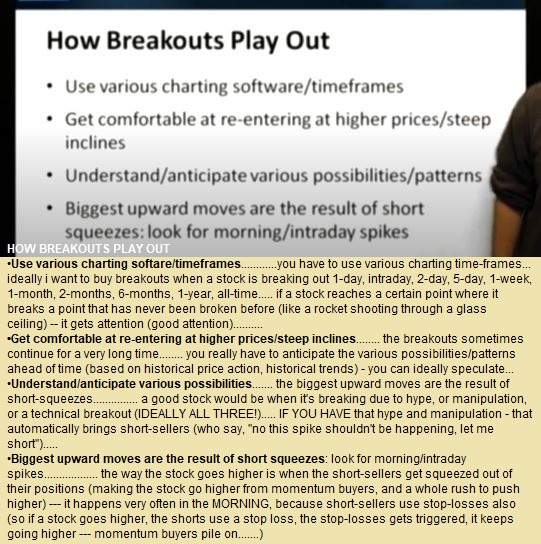
HOW GRITTANI BUYS NASDAQ(LISTED) BREAKOUTS: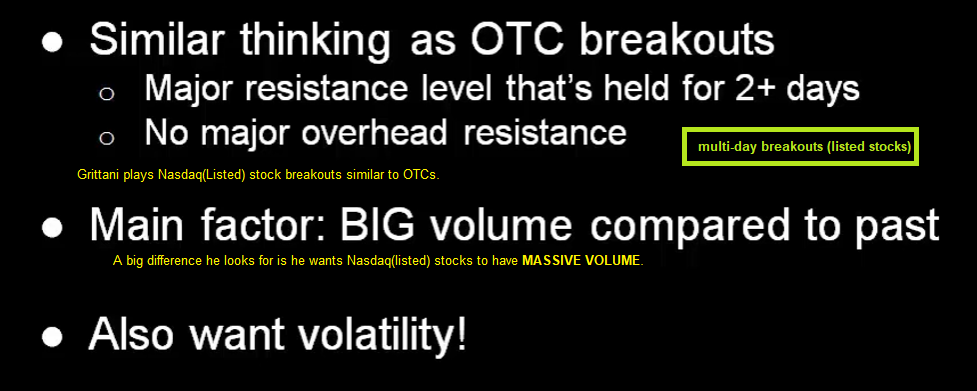
.PNG?timestamp=1639038172158)

- A breakout is often marked by a dramatic increase in volume.
- FALSE BREAKOUTS tend to have light volume.
- A breakout on low volume SHOWS LITTLE EMOTIONAL COMMITMENT TO A NEW TREND ... IT INDICATES THAT PRICES ARE LIKELY TO RETURN TO THEIR TRADING RANGE...
- A true breakout should not be followed by a pullback into the range .. just as a rocket is not supposed to sink back to its launching pad.
- The best time to buy a breakout on a DAILY CHART is when the WEEKLY CHART suggests that a new uptrend is developing.
Identifying the Real Breakout- A great trading tool for spotting real breakouts is the volume indicator.
- Real breakouts happen during high trading volumes and volatility.
- Fake breakouts have low volume and they look more like a range rather than a breakout.
- For a breakout to the upside, you want the stock to close decisively outside of the triangle formation with a pickup in volume.
- Breakouts to the downside also require a decisive price break of the formation, but the volume does not need to display a significant increase in activity.
- If you notice a pickup in volume on a breakdown, odds are it is a false signal and the stock will likely reverse to the upside.
- A breakout is often marked by a dramatic increase in volume.
- FALSE BREAKOUTS tend to have light volume.
- A breakout on low volume SHOWS LITTLE EMOTIONAL COMMITMENT TO A NEW TREND ... IT INDICATES THAT PRICES ARE LIKELY TO RETURN TO THEIR TRADING RANGE...
- A true breakout should not be followed by a pullback into the range .. just as a rocket is not supposed to sink back to its launching pad.
- The best time to buy a breakout on a DAILY CHART is when the WEEKLY CHART suggests that a new uptrend is developing.
- A great trading tool for spotting real breakouts is the volume indicator.
- Real breakouts happen during high trading volumes and volatility.
- Fake breakouts have low volume and they look more like a range rather than a breakout.
- For a breakout to the upside, you want the stock to close decisively outside of the triangle formation with a pickup in volume.
- Breakouts to the downside also require a decisive price break of the formation, but the volume does not need to display a significant increase in activity.
- If you notice a pickup in volume on a breakdown, odds are it is a false signal and the stock will likely reverse to the upside.
Min 40 - min 43 -------- A breakout is more of a marathon than a sprint.. they don't shoot up right away... OTC breakouts -- you need to set your risk beneath consolidation where the potential breakout level exists ------ www.youtube.com/watch?app=desktop&v=XY76jXe-Fk4 --------- #RolandWolf #BREAKOUTS
Min 9 - min 15 ---------- Don't chase the breakout -------- intra-day vs daily breakout --------- CHARACTERISTICS to look out for ---------- www.youtube.com/watch?v=4iE88A_O-R4 ............ #BREAKOUTS
Second :30 — how breakouts actually happen over time (they don’t shoot up right away, rather it’s a slow process)........Roland ------ https://m.youtube.com/watch?v=6zBm9LUeoyM........ #BREAKOUTS
Min 29 ----------- Grittani on multi-breakouts, how to play them------------ www.youtube.com/watch?v=mr9F5PADkV8&t=793s ............... #BREAKOUTS
Predicting breakouts ------- https://www.youtube.com/watch?v=QGoLN96KIDI ......... https://www.youtube.com/watch?v=7RbjGk9eNJU ......... #BREAKOUTS
Min 39:55 - Min 43 --------- The process of how BREAKOUTS work (the psychology behind it all) ------- Everyone is in the stock for the breakout -- the breakout POPS UP --- everyone sells for profit --- the stock goes back down --- all of the breakout buyers remaining then sell (that 90% lose) ---- then Roland comes in and buys the stock if it supports the breakout level (and that's kind of when the short's are covering when it isn't cracking; they cover their shares (they buy back in), and Roland rides the dip-buy momentum upwards) ------- www.youtube.com/watch?app=desktop&v=XY76jXe-Fk4 ....... [WHY BREAKOUTS ARE CHOPPY] #BREAKOUTS
Min 4 ---------- when a stock fails to breakout convincingly, cut your losses................. don't chase non-convincing breakouts ------------- www.youtube.com/watch?v=u85bZC7SK90 .......... #BREAKOUTS
-
My friends laughed at me when I said it. 'I don't mind cutting losses when I'm in the green" but my mindset was, yes it's going up but its not moving like I planned so I'm gonna get out before it does something else I don't expect. Top notch video, Tim! [42 likes]
RISK / REWARD
if I'm buying the stock at $3.80 and support is $3.40, my risk is 40 cents per share............. support doesn't change... ... risk is not wherever you decide it is. It is support! ............ when a stock drops quickly, you just need to learn to act quicker, and react (cut your losses quick)..... -[Sykes commentary]
HOW TO SET RISK FOR BREAKOUT PLAYS
I need to set my RISK level at where consolidation holds (so as to give the break-out enough room to let itself "break out" (in other words, do not set my risk level at the breakout level price --- set it below at where consolidation happens so that I'm giving the "break out" potential enough room to breathe and vroom (upwards). . . -Roland Wolf .... #BREAKOUTS
Min 7 ------ on FDA plays --------- "i don't play them at all" -Grittani -------------- "very speculative / risky" -Sykes ----------- www.youtube.com/watch?v=9BqMy3hPVXU ............ #BREAKOUTS
Min 41:20 ------- where to set my STOP LOSS on the BREAKOUT pattern ----------- https://youtu.be/XY76jXe-Fk4 ........... #breakouts #rolandWolf
ACTION---------Set your technical screens (scanners) to pick-up big VOLUME spikes........ #ForFindingBREAKOUTplays -Sykes #BREAKOUTS
Min 17:45 --------- Min 20:30 -------- how to know if a breakout is going to happen or not --- what is the small cap market doing / condition like? ------ www.youtube.com/watch?v=cjc2yzqh9yw ... #RolandWolf #BREAKOUTS #RISKMANAGEMENT
VIEW MY NOTES I TOOK OF DUX'S TRADING TECHNIQUES DVD --- it covers breakout patterns like "the pre-market breakout" and "multi-day/week/month/year" breakout patterns... #BREAKOUTS
Breakouts have the highest potential upside among trade setups. -Mason Fecht #BREAKOUTS
Is it a BREAKOUT? Multi-month and multi-week breakouts happen more often... Multi-year and multi-day breakouts happen less..... [The longer the timeframe of the b/o, the more convincing the breakout... (ex. a year-breakout level is more powerful and has much more momentum to spike than a week-breakout)]. -Dux ... Don't just buy a stock with solid news, you need a technical breakout to accompany the news. -Sykes #BREAKOUTS
 WOW
WOW  — how I can potentially make $10,000,000 off of just ONE TRADE (in OTCs), is by catching them early and holding until it spikes huge — https://m.youtube.com/watch?
— how I can potentially make $10,000,000 off of just ONE TRADE (in OTCs), is by catching them early and holding until it spikes huge — https://m.youtube.com/watch?- a Multi-day runner
- Holding near its highs
- a Low float
- has Great volume
- a Multi-day breakout
• If a stock holds close to the high over a long period of time (3+ days), that weakens its hold (it is more likely to be OVER-EXTENDED and drop in price). <------good for SHORTS
• Imagine if you tried to short a stock against its highs on that FIRST HEAVY VOLUME DAY. Without the stock making a significant push lower, holding those shorts becomes harder and harder. <---------bad for SHORTS (i.e. SHORT-SQUEEZE POTENTIAL)
• On the flip side, if a stock falls away from the highs and stays away, like many of those #biotechs on DAY 1, it will take a lot of buyers (and volume) to break through that resistance area. <------------heavy VOLUME is needed (for a stock to spike) if it is far from its HIGHS
Before you take any trade after 9:45 AM, ask yourself, "how scared would i be if i were a short-seller in this position"?... Put yourself in their shoes to get a sense of what you might expect. -Bohen #TradingPsychology #ImportanceOfVolume #short-squeezes #squeezes
-SCALE-OUT: profit-taking is a must to be taken partially in chunks! There is no advantage in taking profits in one single exit; partial profit-taking always has an advantage in the edge. But trader should do it with limit orders.
- is the stock a former supernova? does it have a history of spikes and/or breakouts?
- how much did the stock's volume increase during it's past breakouts?
- what time of day was the breakout?
- how many times did the stock test PREVIOUS HIGHS before breaking out?
➜ buy above support; never chase a stock when it's passed it's breakout level..........
◆ I never chase stocks past breakout levels.
◆Buy above support and you’ll always feel safer.
I can see a clear level at $8 — that’s support. And I see another level at $9, which is resistance (the stock bounces between those two prices).
if I buy above the $9 breakout level, I don’t have any support to fall back on.
When the stock is consolidating, try buying near a support level in anticipation of a breakout.
For example, there’s a lot of support at $8. It consolidated for hours there. Buy around $8 (at support) in anticipation of a breakout. -roland wolf #breakouts
Local highs and all-time highs are automatic lines of resistance. It’s difficult for stocks to reach new highs because…
- Shorts try to push them down
- And any bagholders sell into strength
So if it manages to break out, it’ll be on a lot of volume. And the move could go parabolic.
Traders looking to ride a breakout move will usually buy on dips above support. Then sit back and wait to see if it’ll go higher.
For both of these strategies::: cut the loss if it breaks through your support. Always trade with a plan.
When a stock goes on a massive run, everyone gets super excited about the news/hype around the company. Then the stock tanks. But instead of staying disciplined and cutting losses, bagholders hold. They either…
‣ believe in the company
‣ don’t want to be wrong
‣ are too stubborn to take a loss.
‣ or they’d rather hold out and wait until they’re breakeven.
I almost never like day-one moves on bag-holder stocks. There could still be a ton of selling pressure. And that means more supply than demand.
That’s why I prefer to wait. I want to see multiple green days in a row to confirm ongoing demand. That indicates a shift in supply and demand. Until then, it’s a guessing game.
If you had a winning trade, congrats. But don't get greedy. If you don’t take profits into strength, you could become another bagholder.
80% of the time, stocks die on day one.
It’s that other 20% I want to focus on.
Those are the stocks that give us the greatest potential for big winners.
Now, usually a stock needs a trending theme like Monekypox or electric vehicles to sustain a multi-week rally.
I see a lot of biotech companies soar on premarket news of this trial result or that drug approval.
These rarely hold up more than a few days.
But every once in a while, a special pattern develops. And if you can spot it, you might find the next explosive stock.
Keep a list of stocks that finish higher off their first big move. See whether they follow through the next day or spend the next week consolidating.
While there are plenty of setups for the follow through and day 3 tactics, there’s always a chance you find a stock biding its time for the big move. -Bohen #multiDayBreakouts
THE MINDSET OF TRADERS IN A STOCK THAT IS HITTING RESISTANCE ON THREE OCCASIONS OVER THE PAST 5 DAYS (Day 1, Day 3, Day 4)
There are likely three traders left in the stock:
1. those who bought in early, either haven’t taken profits or took some (and they'll want to sell into any spike before the weekend comes)
2. those who came late and bought somewhere after the run (they'll want to sell into any spike before the weekend comes)
3. short-sellers in the stock - there probably aren’t many of them left b/c the stock hitting resistance levels prior probably scared them to take profits in between (so short-squeeze odds are pretty slim)
* thus anyone buying into the stock (especially if it's on a Friday) is likely to get stuffed.
** Now, had shares pulled back some, that would give shorts a chance to accumulate and longs reset (a substantial pullback all the way back towards the low of the breakout candle is a positive factor).
GET A FEEL FOR THE STOCK'S MOVEMENT
Just like humans, stocks need time to recuperate.
Nothing goes up in a straight line.
You can think of the price action as energy. Each huge movement expends energy.
Naturally, they need time to rest.
Sometimes this can take a few days. Sometimes it can take a few weeks.
The reason I like multi-day runners over day one spikers is that they give you key levels to trade off. That makes it easier to plan your trades. You can base your entries and exits on key support and resistance levels on the chart. -Bohen
WHEN A STOCK RUNS 10 DAYS STRAIGHT (GREEN DAYS IN ROW), it's first red day is liable to result in more red days (lest a new catalyst appears and pushes it further).
Bottom line: The major gains have already been booked on the long side — and the shorts know this.
The experienced bulls likely sold into strength long ago and moved on, leaving the stock a prime target for short-sellers and put traders (options short-sellers).
When the psychology of the trade is at this stage — with desperation and panic beginning to noticeably set in — it’s time to be aggressive.
This can be a five-star setup with a high probability of success. And those don’t come around very often. -Croock #psychology
Which would you rather trade: A premarket squeezer on the 1st day or a multi-day runner?
My money’s always on the multi-day runner.
Why?
Because multi-day runners have something these fly-by-night stocks don’t … PROOF!
let me tell you a little secret … A stock can run for days but usually fails once!
That’s a big reason why I don’t like the sketchy biotechs that pop on news.
Instead, I prefer stocks that show me over a series of days, if not weeks, that they want to move higher.
Many traders struggle to find these stocks for two reasons:
- Multi-day runners have news that dropped before the current trading day
- Traders miss the trend reversal
Multi-Day runners criteria:
1. Is there heavy volume?
2. Is it in a hot sector?
3. Is it a former runner?
4. Is it a low-float stock?
4. Is there news?
It’s that last one that confuses folks.
You see, a multi-day runner doesn’t necessarily have news from that morning.
Most of the time, it’s news that dropped days to even weeks beforehand.
The press release can occur almost a week prior.
However, a multi-day runner takes news and builds momentum off the catalyst.
Volume remains steady as buyers keep pushing the stock higher day after day.
You see, a multi-day runner doesn’t necessarily have news from that morning. Most of the time, it’s news that dropped days to even weeks beforehand. However, a multi-day runner takes news and builds momentum off the catalyst. Volume remains steady as buyers keep pushing the stock higher day after day. -Bohen
HOW TO FIND MULTI-DAY RUNNERS
Once a stock's uptrend has been broken (i.e. once a stock dips/tanks), I want to see shares break back above the highs to prove to me the trend was still intact.
Because at the end of the day, if the trend isn’t clear, then I’m not interested.
Additional Tip…
Keep a watchlist of stocks from the past few months with multi-day runners.
Look for charts where shares continue to hold up above former breakout areas.
Then, watch for catalysts, news driven or otherwise, that can push the stock on its next leg higher. -Bohen
What we look for after the big first-day run is for the stock to open weak. It opens red and that makes shorts think it’s the first red day…
Short sellers think they’re in control…
But the dip is brief and the stock reverses and goes green. That’s typically the level shorts use as their risk. And the buying starts there with shorts buying to cover and longs entering to ride the momentum…
For this pattern, enter when the stock goes green. Then use VWAP or the low of the dip as your risk.
From there you can use Oracle support and resistance lines to guide your trade.
The great thing about the red-to-green move is that you can trade any time after the first green day. It’s great for multi-day runners and even day trading ‘real’ stocks that are uptrending. -Bohen
★ PLAYING AFTERNOON VWAP HOLD PLAYS IS ALWAYS THE BEST DECISION WHEN LOTS OF STOCKS ARE SPIKING LARGE PERCENT GAINS IN THE MORNING (AND OVERALL, MULTI-DAY RUNNERS ARE MUCH BETTER TO PLAY THAN PREMARKET BREAKOUTS (NEVER TRADE PREMARKET; IF YOU DO TRADE PREMARKET, "BUY IN PRE, SELL IN PRE" is the saying) because a stock can tank at the open after it's spiked in premarket
⇾ With all the gappers in premarket yesterday, a lot of traders got excited.
⇾ a lot of traders struggle with FOMO. They want to nail every play and make bank, Bro…
⇾ So they bounce all over the place, chase entries in the wrong tickers, then end up with a loss and wasted capital.
⇾ Here’s what I prefer to do...
⇾ I wait until the afternoon — at least noon or later.
⇾ Because when you let the charts play out, it makes it easier to spot the one lone survivor. -Bohen
So if all these biotechs eventually fail, what do I mean when I say the biotech sector is hot?
Well, I don’t mean you should buy biotechs with no news and no volume. And I certainly don’t mean buy morning Biotech runners and hold for multi-day runs…
That’s not how the biotech sector works.
When the biotech sector’s hot, watch for the next sketchy biotech stock with news.
Focus on day trade patterns only. When you see profits, take profits. -Bohen #biotechs #breakouts
you can buy a breakout above the previous high....also toward the end of the week, buying on a Friday==Friday's are very special where the hype can really build, short-sellers are scared to hold short during the weekend, so it gaps up over the weekend.......it really spikes, and it crashes in a 30 minute period on Monday ..that's volatility.... -Tim Sykes
• If a stock holds close to the high over a long period of time (3+ days), that weakens its hold (it is more likely to be OVER-EXTENDED and drop in price). <------good for SHORTS
• If a stock tanks (like many #biotechs on DAY 1), it will take a lot of buyers (volume) to break through resistance. <------heavy VOLUME is needed (for it to spike) if it's far from its HIGHS
So if all these biotechs eventually fail, what do I mean when I say the biotech sector is hot?
Well, I don’t mean you should buy biotechs with no news and no volume. And I certainly don’t mean buy morning Biotech runners and hold for multi-day runs…
That’s not how the biotech sector works.
When the biotech sector’s hot, watch for the next sketchy biotech stock with news.
Focus on day trade patterns only. When you see profits, take profits. -Bohen #biotechs #breakouts
These sketchy stocks run on news and hype around potential treatments for things like cancer, Parkinson's, and diseases you’ve probably never heard of.
Biotech news catalysts and hype can create great trading opportunities...
But there's a dark side to these stock market darlings.
◆Biotech stocks create great trade opportunities. Their news catalysts excite a lot of traders. But not all biotech news is created equal…
Some headlines can move stocks for multiple days. Other news may create spikes that quickly fail.
Why?
◆News about well-known diseases like cancer, Parkinson's, and Alzheimer's can create bigger moves. These diseases impact many people and have no cure. That strikes a nerve with people and triggers emotions…
Traders want to believe these companies will find a cure and save the day. They may also think the stock will be the next Moderna, Inc. (NASDAQ: MRNA). So they chase entries and hold.
◆But believing in these companies is the biggest mistake you can make with biotechs.
99.99% of biotechs fail.
◆Don’t hold biotech stocks long term or believe any of them will deliver on their promises.
Biotech stocks are day trades only.
Trade the news, momentum, and hype. Stick to your pattern and setup, then move on. And when a stock dies, it dies.
◆Don't bag-hold sketchy biotechs. -Bohen #biotechs
Min 6:30 — on breakouts—
https://m.youtube.com/watch?v=vuYMxs3ZvMU ......... #huddie
-
My first go-to pattern when
I was starting was breakouts. . . The longer the timeframe of the breakout goes
the more convicted I am taking that breakout. . A 52-week breakout is better
than an intraday breakout... . . .-[Tuohey commentary]
-
MIN 17:50 --------- how to
play breakouts, and make bank --------- www.youtube.com/watch?v=8TlC2DlIKLs
........... Jackaroo dropping gems on how he makes bank............
-
A high of day break (of
resistance) on no volume means a continuation is unlikely. . . -[Tuohey
commentary]
-
QUESTION: You sometimes
talk about a stock breaking-out on high volume, or falling on fading volume.
What do you mean by that?
MICHAEL GOODE: What matters
in these cases (momentum stocks) is not the actual volume but the volume
relative to the stock’s average volume. If a stock breaks-out to new highs on
volume that is over twice its normal volume, that is usually indicative that
the stock will go higher. Conversely, if a stock is up big and its daily volume
starts fading it may fall as all the momentum buyers will sell the stock.
#BREAK-OUTS
-
I try to not chase stocks.
That means…
- I stay away from breakout
plays for overextended daily charts
- And I won’t buy while a
stock’s breaking out
It’s just not worth it. To
stay in the game you have to learn to focus on the best possible plays.
The best course of action
is to wait for a pullback. Then buy above an obvious point of resistance like
at a double bottom.
The most difficult part is
watching a stock break out when you’re not in it. Get used to the feeling.
There will always be plays you miss. That’s part of trading.
I’m just trying to take the
meat of the move. I don’t need to buy the bottom or sell the top. And I know
there will always be profits I miss out on. So if I miss a play here and there,
it’s OK. That’s trading.
Just make sure you use
every opportunity as a learning experience. As long as you grow your knowledge
account, it’s not a waste. #breakouts
Morning spikes occur more on Fridays...... Spikes occur
more on Fridays because short-sellers are scared on Fridays.......
they don't want to hold positions on Fridays... They’d rather exit positions so
that they don't have to think about what could happen over the weekend...
-
BUY PATTERN------ (supernova), But if it has a morning spike,,, it's up-trending
near that morning spike,,, it has volume,,, and it's 50% off the highs,,
this fits every single pattern that I love.... -tim sykes
-
#3 The Supernova ---------- starts at Minute 13:25
-------- PSFW Part Deux – Part 2 ----------
https://members.timothysykes.com/lessons/psfw-part-deux-part-2 ............
-
Let’s say $5 a share is the key breakout level. I might put my limit at
$5.05 or $5.10 just in case. I think if I’m going to buy a stock at $5, I think
that it can go to $5.50, maybe even $6 a share. So I don’t mind if I pay an
extra few cents a share as long as I get the order. -Tim Sykes
-
Sometimes I even exit a trade when I’m up if the stock isn’t breaking
out fast enough. That’s how strict I am. I really would really just be
careful.
Be careful. The market makers are going to try to screw you. The brokers
are going to try to screw you. If you expect the worst out of everybody, you’re
never disappointed.
-
QUESTION: Now, you can manipulate these candles a little bit by changing
the time frames. For you, what are the two most important time frames?
ANSWER: I always look at one-minute charts. But I’m also looking at a
daily chart and the two-day chart. I like looking at one-month, six-month, and
one-year charts. I want breakouts ideally on all different levels. The more
breakouts, the better because different traders respect different time
frames.
I like looking at stocks when they’re breaking previous highs. -Tim Sykes
Key Point: Use Charts in Multiple Time Frames ========= Tim likes
looking at a variety of charts — one-day, two-day, one-month, six-month,
one-year. Looking at multiple time frames can give you more information about a
stock and what kind of patterns have applied in the past. For example, looking
at a breakout in multiple time frames makes it more clear. Is it an intraday
breakout only? Or is it a multi-day, multi-month, or even multi-year breakout?
-
If a stock is breaking out I want the Level 2 to be strong. I want there
to be a lot of bidders. I don’t want there to be a lot of asks. If there are
some big sellers I want the bidders to kind of chew through the ask.
-
What I often say is that: sometimes when a stock can’t break out it’s
because there’s a wall of sellers.
EXAMPLE
Let’s say $23.63 was an important point on the chart — in this example
it doesn’t really matter — but let’s just say in a hypothetical example, $23.63
is the three-month high…
If there are 10,000 shares trying to be sold there and there’s no
budging, it’s like the wall that will never break versus if it’s a three-month
high and it’s gradually getting chewed through. If it goes $23.63, then $23.64,
$23.70, that’s a technical breakout.
I like to buy breakouts, but I want the chart to be a breakout. I want
the Level 2 to be a breakout, and I want it to be convincing.
Sometimes you just get a breakout by a penny or two, and then look at
this. We have sellers in the red at $23.64, $23.65, more sellers at $23.65. And
it looks like actually a pretty big seller of 1,405 shares at $23.65 in the
yellow.
Every single penny, there are sellers higher. The best breakouts, the
best stocks, when they break through a key level, they just can really explode
and you don’t really have to worry about sellers every penny higher.
-
And then if I’m trying to sell, again, it’s why am I selling? Is the
stock failing to break out? And if it’s a fake-out breakout, I need to get out
before other people realize that it’s a fake-out. Like I said, I’m going to
give it a little padding.
So if I was trying to sell this stock at $23.40, I might put my sell
order at $23.35.
If the FBI is raiding their headquarters — which is possible because a
lot of these penny stocks are pretty sketchy — I don’t care whether I get out
at $23.40 or $23.35.
I might put my limit at $23 if there’s breaking news that’s really bad,
and I just want to get out before other people see it.
-
QUESTION: For you, moving averages, RSI, MACD … they’re just
meaningless? You don’t care about them?
ANSWER: I’ve heard of them. I like to laugh at them. I know traders
believe in them, so I respect that other traders believe them, because then it
can become a self-fulfilling prophecy.
For example, I like
52-week breakouts, because it’s not just about the news. Sometimes it’s just a
technical breakout.
When a stock breaks a
52-week high, that gets other traders interested because it pops up on their
screens. Right?
Key Point: When it Comes to Technical Indicators, Tim Keeps It Simple
========= There are a lot of different indicators out there, but Tim doesn’t
look at most of them. Instead, he keeps it simple by focusing on big percent
gainers. He also uses basic support and resistance levels. One example is a
52-week breakout because technical breakouts get other traders
interested.
QUESTION: what is necessarily support and resistance like when it comes
to this breakout?
ANSWER: Whether it’s $3.45 or $3.50, if a stock is going to break out
big, it should break out convincingly. It shouldn’t just go to $3.51 or
$3.52.
A lot of these stocks
tease breakouts, but they actually turn out to be fake-outs.
In an ideal world, you
get a technical breakout over a few weeks. You get an intraday breakout,
ideally a morning spike with news and big volume. I like multiple indicators in
my favor before I risk my hard-earned money.
Key Point: Support and Resistance Levels Help Determine Entry and Exit
Points ========= Support and resistance levels — key levels the stock has
previously tested — are worth evaluating to determine appropriate entry and
exit points for a trade.
BREAKOUTS
I wouldn’t chase it now, even though technically it’s a breakout, but
it’s had three big green days, really two big green days in a row. I don’t like
buying on a third green day. I like buying the first green day over a previous
breakout.
That’s not to say that a breakout is going to fail on day two or day
three. I just don’t like it. I prefer day one breakout.
So in a perfect world, you get a breakout over the previous highs with
one big green candle, and then most likely it’s going to create a second green
candle.
QUESTION: Just to sum up here before we close out for the day, what gets
you interested in a stock?
ANSWER: Good news. Good chart. Good breakout. Good volume. Good price
action. After doing this now for 20+ years, I have my favorite patterns.
So I just want the
stocks to come to me. I’m not the one who’s like, “Oh, I need to trade. I have
a final tomorrow. Let me be a degenerate gambler.”
-
BONUS Question: What does ‘resistance becomes support’ mean?
* Key resistance levels
often become support levels after a breakout.
-
I go in with a very specific plan. If I’m buying a breakout, I want a
convincing breakout. If I’m dip buying a morning panic, I want that bounce
right off the morning panic. If I’m shorting a first red day, I want the second
day to be red too.
-
FIND A BREAKOUT
First, find today’s biggest percent gainers. Filter the scan for stocks
priced between 25 cents and $5 per share with a trading volume of at least
100,000 shares. Use StocksToTrade if possible. Look at the two-day charts with
one-minute candles. (or, intraday, 1-minute candle, 6:1 risk/reward scenario).
Find a stock where resistance becomes support on the chart and then the
stock moves higher. Use the drawing tools to place support/resistance lines on
the chart.
-
QUESTION: All right, Tim. We’ve started going over some of the patterns.
A really common one that I think is easy for a lot of people to see is the
multi-day breakout. How do these stocks come across your radar? And when you
find one, what are you looking for?
ANSWER: I’m looking for big percent gainers already on the day, whether
they’re up 15% or 40%. Then I’m looking to see which ones have legs.
The beautiful thing with these low-priced stocks is that they can spike
50% to 100% in a day, sometimes even 200% or 300% lately, which is crazy … Or
200%, 300%, 500% over a few days as more people see the news and see what’s
spiking the stocks.
Key Point: Look For Stocks That Are Already Up ============ Tim doesn’t
try to anticipate what stocks could spike. He looks at what’s already up that
day, then tries to determine if there’s still room to go higher. With multi-day
breakouts, the stock is usually on his radar from the previous move. He sees
where the technical breakout could happen by checking the chart in different
time frames.
This is what I love, the breakout over the previous highs. Huge volume,
in a hot sector, with a technical breakout, and it already got up to the
$2.70s. So you make nearly 75% of your money on the same day, just recognizing
the technical breakout, recognizing the hot sector. And whether you hold for $1
a share or … I know some students who bought it at $1.60 or $1.65. They sold it
at $2 a share and they’re still making 15% to 25% on their money, same day.*
And that’s why I kind of rip on mutual funds and long-term investments —
they’re trying to make that over the course of a year.
You probably could have even made a few hundred thousand dollars. But
you’re not going to make millions in a day.
You’re not going to make tens of millions or billions, which is what
Wall Street focuses on. So this is the opportunity. If you have a small account
of a few thousand dollars or $10,000 or $20,000, these are the kinds of
opportunities that you should be focusing on.
Simple technical breakouts, in a hot sector … we’re in a hot market. It
doesn’t always work. This stock could have failed to break out at $1.60. But
when it breaks out … Pull up an intraday chart and you can see how quickly once
it broke $1.60 it went to $2.70 by days’ end at the high.
-
In any market where there’s a hot sector. Right now it’s coronavirus. So
I’m looking at all mask companies, all vaccine plays, anything that’s spiked
recently in the past few days or weeks, and trying to see if it can respike.
Because former runners can become runners again.
I bought this the other day, on the day that CVS and UPS announced the
agreement. And I was thinking, “Wow, this is huge for drone delivery.” And the
stock spiked a little bit. I made a few hundred dollars, but not very much. I
was frankly disappointed. I was like, maybe it’s all priced in.
Two days later, two days afterward, now it finally takes off with the
technical breakout and the huge volume. So with penny stocks, it’s not always
logical. The good news is not always priced in, in real time. And this is
what’s also different than blue chips and most stocks on Wall Street.
If Apple, Google, or Facebook announces good news, it’s priced in within
seconds, if not five minutes max. Here, the good news with CVS and UPS, two big
brands joining together for drone delivery, which will benefit UAVS. And this
stock doesn’t really spike that much until two days later.
That should show you the window of opportunity. This is why I don’t use
hot keys. You didn’t have to be fast with this.
Key Point: You Don’t Have to Be First ======== The fact that penny
stocks are largely ignored by the media means that you don’t have to be the
first in on the action. It takes a little longer for the world to notice. That
means you have more time to get into a trade than you might with a larger stock
like Google that gets a lot of media attention.
On a stock that’s already up from 25 cents, that’s not convincing
enough, and now the breakout is starting to fail. So I don’t like buying
breakouts on stocks that have already risen 10, 20 times. Eventually, they’re
going to stop being so good because the stock has already run too much. This is
the thing … You need to see a convincing breakout.
Key Point: Be Aware of Recent Price Action, Topping, and Second Green
Day Breakout Attempts. ======== As Tim cautions, it’s “very tough to buy a
breakout on day two” — it may be the wisest course of action to wait until next
time. At the very least, be prepared for a failed breakout. The VXRT example
Tim analyzed in the video is an example of a weak breakout that eventually
failed. Also, know recent price action. How far has the stock come up during
the entire run?
Key Point: Pay Attention to Different Indicators ======== As Tim
advises, just noticing that a stock has the potential to breakout isn’t enough.
He considers the catalyst, the sector, and other indicators.
Very tough to buy a breakout on day two. And that’s exactly what
happened when it finally succeeded in breaking $3.50. Go over a little bit a
few more days.
And day two, day three of any of these big movers, you have less odds of
success.
I like stocks that breakout on day one. A lot of people are seeing it
for the first time — the big green candle, the big breakout. Afterward, you
kind of wasted some of the bullets. There’s just not as much firepower, and
this did, again, break out.
So keep in mind where the stock had come from over the past few weeks
and months. And recognize day two, day three run-ups have a lower probability
of success than a first green day, day one breakout.
Key Point: Pay Attention to Different Indicators ========== As Tim
advises, just noticing that a stock has the potential to breakout isn’t enough.
He considers the catalyst, the sector, and other indicators.
QUESTION: Do you find that OTC or listed stocks have a better chance of
breaking out? Which one do you prefer?
ANSWER: It depends … What is the news? What is the catalyst? What is the
sector? I like good solid setups. If I had my choice, I would choose an OTC
stock, breaking out on day one, with some amazing press release. . . Let’s say
it broke out gradually. That’s another thing. Is the stock going up gradually?
Or has it just gone straight, hockey sticking, going supernova, and losing most
of its chance to go further supernova? So I don’t want the stock to go up too
fast or too much because then there’s greater risk, especially holding
overnight.
Sometimes a stock is breaking out and I plan on holding overnight, but
it just goes up so much before the close, I sell before the close. Because why
risk it overnight when you can have financing news or the market could tumble?
Anything can happen. And if your target is already achieved, there’s no reason
to hold overnight. So you have to judge each play individually.
And being aware of the market conditions, as you were saying, and
knowing which stocks are more likely to break out than others.
Right now as we’re filming this, the coronavirus market has been going
on for several weeks. It’s kind of late for a lot of these coronavirus spikers
that are already up 10 times. There’s not much higher they can go. Sure, they
might surprise you. But very rarely do these penny stocks ever just keep going
up without any resistance whatsoever. Versus if this was the first breakout
…
Look for Stocks That Are Already Up
You get this by now, right? I don’t waste time trying to anticipate or
guess. My focus is always on big percent gainers. Whether it’s yesterday’s top
percent gainers or today’s hottest stock, it’s where I look first. With
multi-day breakouts specifically, there are a couple of things to remember…
* First, you’re looking
for recent runners that have pulled back or consolidated. Then, for some
reason, the stock starts to run again. It might be a new catalyst or an
informational inefficiency. The breakout is when the stock convincingly breaks
the previous multi-day high.
* Second, to find a
multi-day breakout, you need to know the recent high. That means you need to
look at stock charts in more than one time frame. Like you’ve been practicing
in your daily assignments.
For multi-day breakouts, you might check the five-day, 10-day, and
15-day charts. Note: there could be key resistance going further back. This
lesson focuses on multi-day breakouts. But it’s good to check for multi-week
and multi-month resistance levels, too.
Most importantly… Don’t Anticipate, React
You Don’t Have to Be First
If a penny stock spikes with big volume and a solid catalyst but stalls,
keep it on your watchlist for a while. How long? Several days or even weeks.
That’s not to say it will run again. But it has the potential. If you’re paying
attention, you can prepare for if/when the breakout happens.
Sometimes breakouts are like self-fulfilling prophecies. Your job is to
be there when then the frenzy happens. As always, if the breakout fails …
follow rule #1: cut losses quickly.
Former Runners Can Run Again
Traders remember former runners. This is one of the reasons I constantly
tell students to study the past. Wherever you are on your trading journey,
study former runners. Get to know when and why they’ve run.
And … when a stock runs today, tomorrow, or the next day … see if it’s
run in the past. If it has, it can run again. Even if it hasn’t, keep it on a
watchlist for a while. It could run with big volume and the right
news.
Beware of former one-day spikers. If a stock has a history of one-day
spikes, it’s more likely that price action will repeat next time. That doesn’t
mean it can’t break out. But you should adjust your risk based on the stock’s
history of failing.
Remember, your goal is to narrow your search down to only the best
plays.
Finally, remember that a first green day breakout is much more
convincing than a second green day. Especially if the stock is already up a lot
from its recent lows. It’s almost like the stock becomes top heavy. Many second
green day breakout attempts fail. Not all … but it lowers the chance of
success.
I'm more likely to buy morning spikes, on Fridays......-Sykes
Morning spikes occur more on Fridays...... Spikes occur more on Fridays because short-sellers are scared on Fridays....... they don't want to hold positions on Fridays.. they'd rather exit positions so that they don't have to think about what could happen over the weekend...
SPIKABILITY DVD --------- Min 40 — buying stocks on FRIDAYS #fridays — Sykes loves buying stocks on Fridays
Pay Attention to Different Indicators
Just because a stock looks ready to break out doesn’t mean you should
trade it.
What’s the catalyst? Is
it an upcoming news play — where the company announces an investor call for two
days’ time? Or is the stock hitting 52-week highs on solid earnings and a big
contract? Whatever it is, identify it.
What’s the sector? Is
it hot? Are there sympathy plays galore?
What’s the volume and
float?
Does it have a history
of failed spikes?
How fast is it
spiking?
What day of the week is
it? How about the time of day?
If those questions seem like a lot, keep studying. There aren’t that
many indicators — I look at seven. The news catalyst is one of the seven. The
pattern — a breakout in this case — is another. Price action goes with pattern,
etc.
-
How do you identify a multi day breakout?
* A stock breaking
through previous multi day highs. Often it’s a recent runner that has pulled
back, then starts to trend up again. Finally, it breaks through multi day
resistance.
How are breakouts like self-fulfilling prophecies?
* Traders watch for key
levels. Oftentimes, they’ll buy a stock just below or at the breakout level.
When enough traders do it the breakout becomes a self-fulfilling prophecy.
-
First green day breakouts are more reliable than second green day
breakouts.
* True: second green
day breakouts fail more often. Especially if the stock is already up a lot from
its recent lows.
-
Look at the chart in different time frames. When you looked at multi-day
breakouts, you identified key resistance levels. Now look at the charts and
identify the following…
Min 11 -------- www.youtube.com/watch?v=QpQ_2VurqW0&t=1s ............. #sykes
Remember what you learned about breakouts. The breakout happens when a
stock convincingly breaks through meaningful resistance, right? First red day
breakdowns are usually the opposite of that.
The stock breaks through meaningful support. First, it’s the green to
red move (i.e., the stock price drops below the previous days’ closing price).
Then some significant support level where the stock consolidated on the run up.
Or maybe it’s a big round number like dropping through $1.
Shorts love it when it happens. As stop losses get taken out, it creates
a tsunami of sellers. But be aware that sometimes the catalyst is real and the
stock is up for good reasons.
-
* * * My first million, I was just buying penny stock breakouts. Then
there were no more penny stock breakouts in 2000, 2001, 2002. I was forced to
learn short selling. So I shorted the failed breakouts, same exact pattern,
different parts along the way.
-
There are a lot of stocks that are breaking out midday around 11 a.m.,
12 p.m., 1 p.m. Eastern. By and large, they’re usually going to fail.
-
If I buy a stock at let’s say $2, and it’s breaking out, I could buy a
few thousand shares usually. And the goal is to sell it at, like, $2.50 and
make 50 cents a share, make a few thousand dollars.*
I’m always watching after hours winners.
I’m not a big fan of shipping, tankers, or oil plays. This is, to its
credit, a nice chart breakout above $5 here. Actually probably should have been
long, going into this first green day with the breakout.
This one is a multi-week breakout, but it’s also had three green days in
a row. And they pre-announced that there would be good news today. They
pre-announced that there was going to be a conference call and usually the
pre-announcements lead to overexcitement. And then when the conference call or
the press release actually happens, it’s usually a time to sell off.
-
QUESTION: what's a good stop loss?
ANSWER: I don't use percentage stop losses..... i use the chart........... I
am stopping out if it fails support.......... i'm not stopping out if it drops
a specific percentage........... i talk about breaking support, and failed
breakouts........... I don't think a percentage methodology is
effective........ use the chart to guide you through the
trade..............
-
Price action is the fire............ but volume is the gasoline that you
dump on the fire........... and that's what creates the big moves..............
you add news, you add volume, and you add a chart breakout ------ you get a
stock that can really really grow your account.......... -Tim Bohen
-
STRATEGY ------------ Unusual volume brings
unusual price action.................Low float stocks with news breaking
through key levels that previous day's highs.......... all these
things......... it repeats and repeats and repeats............... you might
have to wait a day or two........ but they will come back............ Now, if
the stock drops (which it might) ---- the stock is up 300% in two days,
if it drops, it's not a buy......... you're not looking to dip buy these
things........... you're looking for strong stocks.......... Otherwise, (if it
falls apart) there's no trade........... You're not looking to buy into that
fading action........ don't try and buy weak stocks............. you want to
buy when everyone wants in and when everyone wants in is at 2 pm, on the high
volume spike........ -Tim Bohen
-
SETUPS
------- i think you should focus on 2-3 patterns max. .. you should really
trade the minimal amount of setups (if that's a late-day breakout / breakdown,
or an earnings winner breaking out to 52-week highs) --- track your setups ...
see what works for you. . . -Bohen
-
BREAKOUTS and BREAKDOWNS --------- What if a stock breaks below a key
level that it's been holding for support --- for instance it's never broken
below $1 a share ---- a $1 a share is actually very important b/c the exchange
that it's on sometimes requires it be over a $1/share or more (like the Nasdaq)
----- when it breaks to $.99 or $.98 cents, now that is a break-down a key
technical level --- it can get de-listed from the exchange, it can bring in
more short-sellers....... you don't want to be in stocks that break below core
levels......... when i like to short-sell, i look for that support crack, and
that would tell me that there is some more potential downside.........
breakouts often lead to higher prices, breakdowns lead to lower prices -- more
times than not...... -Tim Sykes
-
CATALYST ---------- any kind of information that can move a
stock......... i don't like just trading technical moves. . . ideally, i want
the technical breakout to be in conjuction with a news catalyst. . . . .
usually when a stock breaks above a key level, with bigger volume, with news,
that gets on a whole lot of traders' radars and that can create a
self-fulfilling prophecy of even further breaking out (traders on social media
share these press releases, etc, which leads to more spiking). . . .
-
For me, i know my patterns....... I want clear
break-outs over recent highs (1-week, intraday, 1 month, 1-year, 2-year, 5-year
breakouts)....... the more time-frames the better........ --it
will pop up on a bunch of traders' technical scans... and most traders like to
buy breakouts..... and then they might buy it,,, and the whole trader mob
might buy it, and that's what creates this spiking fulfilling
prophesy...
-
I don't want to buy Random Patterns or at Random
Prices. EVERY trade I do should be based off a breakout, a
dip at/near support resistance levels..... The
chart has to have a breakout or breakdown for me to be interesting in playing
it...... -----and if the breakout or breakdown doesn't continue properly,
that's when i cut losses quickly
-
Sometimes the news does not lead to a successful breakout.. And no news
can lead to a successful breakout..... sometimes the breakout itself (in the
chart) can become the news!
-
Look for those early morning spikes..Look for HIGH-OF-THE-DAY BREAKOUTS..STOCKS
BREAKING 1 YR, 2 YR HIGHS i look for!
-
To be a failed morning spiker and just barely hold
the break-out........It's very bad for a morning spiker to fail to hold the
spike......
-
I'm always interested in spikers that might have follow-up
legs...... <--checking the past
history of the chart with the resistance/support levels!
-
There's absolutely nothing i want to do with a stock, as long as it's
under resistance levels......it's gonna take news, volume (for it to breakout).
-
I have a lot of charts. . . I'm a chart guy. . . . I want a technical
break-out. . . . the greater the volume the better. . . I want
consolidation and then a technical break-out. . . When you start seeing
more and more people talking about the stock (on the message board),
-Tim Sykes
-
QUESTION: What is a breakout? Is it intra-day breakout, is it daily?
ANSWER: Ideally you buy on intra-day breakout ------ ideally you
buy at 2:30 - 3 pm ET. . . and it closes strong. . . I like big round numbers
(like when a stock breaks through $.50 cents . . . . If you buy at 44 cents and
it breaks 50 cents, that's a powerful price push, with a power volume push,
with a strong technical break-out -- the next day it gaps up to $.60 and it
goes up to $.70 cents. . .
-
CD 4 of PENNYSTOCK FRAMEWORK DVD ------ min 3:10:50 ---------- what to look for for breakouts
-
Cd 5 of pennystock framework dvd ----- min 12:30 ---- intraday breakout -- hype in the morning --- then
chill out during lunch time
-
WHEN TO BUY PENNY STOCKS
Strategy----Breaking out to
new highs on strong volume (Technical Breakout)--------------- Just a basic
technical breakout....... I will buy them if they're breaking out on strong volume on
hype, on whatever...... There's money to be
made on the way up.
Strategy----Breaking out due
to spam mailers and emails being sent (Manipulative Breakout)---------------
sending out newsletters, spam... it is what it is... you don't have to be
against manipulation, you just have to understand what's going on.
Strategy----Breaking out due
to message board chatter/newsletter/Analyst recommendations (Hype
Breakout)----------- companies get hyped up. Message board chatter is complete
crap. They're trying to influence you... On hype breakouts, my hand is on the
SELL button even quicker.
Strategy----Breaking out due
to panicking shorts/margin
calls/forced buying (Squeeze Breakout)--------------- I will be QUICK to
buy-to-cover here as well...... Short-sellers,
they don't necessarily want to buy the stock, but they're getting squeezed -
they have to buy their losses. Stocks get squeezed... And they can actually go
up faster... But then the squeeze (stock going up) can also retrace (and can
down-trend just as quickly).
-
Strategy------PAY ATTENTION TO message board hype on stocks breaking out to new highs
at market close hours (between 3 - 4:30 pm) <-------great
opportunities to buy a stock gapping upwards into market close....... (you hold
your shares overnight and sell next morning!)
-
Insight------You have to use former highs, as a starting off point for
BREAKOUTS.............. -sykes
-
Insight------You WANT to buy when you see it breaking out above the
range.... When your shorting you want to see it break below a
range...
-
Wisdom---------Boring breakouts... i just don't care man... winning 10 cents a share is
boring......... you need to know what not to trade........ breakouts with red are fake-outs that
scare me out of a trade...... winning 20 cents a share --- not worth my time.......
-tim sykes
-
HOW TO BUY A BREAKOUT CHART PATTERN
Strategy---------Never try and anticipate a break-out....... I buy into a
breakout pattern, only after the breakout occurs........ Breakouts are
not always perfect, but can surge multiple days.......... if it's a top or a
fake-out breakout, I'M OUT......... i might buy back in when the price action is
more confirmed, but ideally i would want to buy into stocks that just keep
surging (so i'm right from the very beginning)... the price action is almost
too easy..... not choppy/messy.... few if any fake-outs....... ... perfect
breakouts do happen every once in a while--- the good news is i know when i'm
wrong within a day...... -tim sykes
Insight-------These whole numbers ($2, $3, $5) are major resistant zones and major
support zones on the downside (if a stock is going down)...
Insight-------Look for the volume spike during breakouts --- that leads to a big-time
spike upwards.......the volume spikes means there's going to be a lot of
buyers........... I wouldn't short right into an increase in
volume...... -tim sykes
VOLUME SPIKES ON BREAKOUTS
Volume spikes are key, because you want a lot of buyers.... you know there's
going to be sellers... you know there's going to be a lot of sellers at the top
of the range because a lot of sellers don't think it's going to break the
range,, so they're going to say "i'm getting out. i'll get back in when it
comes back down". .....i wouldn't try and short-sell at
a top.... i would try and short-sell when there's fading,,,, or
when there's technical support failing (on the downside)......... -sykes
__________________________________________________________________________________________________________________
To learn more about BREAKOUT PATTERNS ------- watch (Disc 3) ---- the
first 20 minutes............... https://profit.ly/dvd/watch/6/1#
__________________________________________________________________________________________________________________
HOW BREAKOUTS PLAY OUT
•Use various charting software/time-frames..................you have to use various
charting time-frames... ideally i want to buy breakouts when a stock is breaking out 1-day, intra-day,
2-day, 5-day, 1-week, 1-month, 2-months, 6-months, 1-year, all-time..... if a stock
reaches a certain point where it breaks a point that has never been broken
before (like a rocket shooting through a glass ceiling) -- it gets attention
(good attention).........
Insight------Get comfortable at re-entering at higher prices/steep inclines........
the breakouts sometimes continue for a very long time........ you really have
to anticipate the various possibilities/patterns ahead of time (based on
historical price action, historical trends) - you can ideally speculate...
Insight------Understand/anticipate various possibilities........... a good stock
would be when it's breaking due to hype, or manipulation,
or a technical breakout (IDEALLY ALL THREE!)..... IF YOU HAVE
that hype and manipulation - that automatically brings short-sellers (who
say, "no this spike shouldn't be happening, let me short")....
•
•Biggest upward
moves are the result of short squeezes: look for morning/intra-day
spikes.................. the way the stock goes higher is when the
short-sellers get squeezed out of their positions (making the stock go higher from
momentum buyers, and a whole rush to push higher) --- it happens very
often in the MORNING, because short-sellers use stop-losses also (so if a
stock goes higher, the shorts use a stop loss, the stop-losses gets triggered,
it keeps going higher --- momentum buyers pile on.......)
Buy on the breakout, sell on the break downs ... It's not that easy,
nothing's easy... remember, 90% of traders lose money..... and 90% of guru's
are full of crap........... -tim sykes
_________________________________________________________________________________________________________________
WISDOM---------You see the first morning spike, and then the second one........This is
how the stock created it's huge gains...........I'm not crazy in saying that
the short-sellers are responsible for these huge spikes.... of
course the short-sellers are responsible..... Who's going to
buy a stock that goes from $5 to $50..........??? It's shorts covering......
-sykes <------THE REASON WHY STOCKS SPIKE (AT TIMES)
A morning spike (gap up) --- shorts are getting squeezed...... then it
takes a few days and it crashes down..... -tim sykes
You have the volume spike, you have the stock spike (break-out),,, you
have to buy it... you have to take advantage of the short's covering
(and pushing the stock up higher)....... -tim sykes
-
Insight------You don't trade a stock in it's (messy) consolidation phase... you wait
for a breakout....... Cup and Handle chart patterns are prevalent and great to
trade in penny stocks...... The first spike then leads to a dip (the cup) and
then the second spike comes from a second breakout and then dips back down
(forming the handle of the cup)............ master penny stock traders
will buy the break-out.....see when it's about to roll over
(fade downwards) and short..... so they make money both
ways (going long, and shorting the stock)........ -tim sykes
-
When a cup-and-handle happens, it should breakout big, except when it's
not meant to be....... -tim sykes
-
Insight |
Wisdom------Understand the un-scalability of this niche......... all of these
variables in this DVD (penny stocking part deux) can allow you to trade with
great probabilities....... I can make 100k to 200k with these little breakouts
in a year, no problem......... but i'm tired of risking all of my money, and
i'm making more money teaching than i could trading..... that doesn't mean that
this strategy doesn't work or that I'm a fraud...... If you're willing to cut
losses quickly, i don't see how this DVD or any of my education will not be
paid for in one or two trades you make....... There's a
lot of variables, a lot of subtleties, a lot of different patterns and a lot of
different players --- once you understand them all, it comes back to cutting
losses quickly........ but all this stuff, if you look at trading, and how much
you can make with part-time trading through solid odds,,,,, I don't think trading should be
full-time..... A lot of full-time traders are whacked out of
their minds ---- their marriages suck, they make too much money, they drink too
much, they all have problems....)...Anybody who devotes their entire life to
watching a little screen with numbers going up and down is a freaking
addict..... trading IS addictive... and you have to be careful, because if you
see this addiction kind of taking over your life, where your day is only good
if you have profits, you have to step back, and say "whoa, wait a minute!
there's more to life than just money....". there's so much more..... I've
definitely made a lot of money, I've definitely enjoyed life when I've had
money........ but I've never been that rich.... $2million is nice, but in NYC?
c'mon... $2M gets you into the club but not much more... right now I have a 500
sq ft apartment, i'm paying $3,500 per month in rent...... sounds ridiculous,
huh.... welcome to NYC real estate...... It's a decked out place; i have an
awesome rooftop, a sun terrace, they also have a concierge (which is good - I'm
a busy guy, i have no time for anything), etc.........
-
I like to buy breakouts at ROUND NUMBERS; ($2,
$3, $5, etc.).. -Sykes #BREAKOUTS
-
If you want to buy a supernova, you want to buy the breakout
OVER PREVIOUS HIGHS, and you want it to be a convincing break-out (it
spikes up fast, a monster breakout). -Sykes #BREAKOUTS
-
If you focus on buying these breakouts on HOT STOCKS, that
have VOLUME, and CATALYSTS --- you will do pretty
damn well.. -Sykes #BREAKOUTS
-
Every single stock (no
matter if it trades intra-day, or 1-day, or 1-week, or 1-month, or
1-year) creates these 7-step framework patterns..... #1
Pre/Early Ramp is just kind of sideways consolidation... #2
The Ramp is the technical breakout where it's gotten above a key-level
that it hasn't reached recently [#2 tells me that the stock is now in play]....
And if there's a catalyst, if there's news, then that's a GOOD SIGN... -Sykes
-
TRADING TICKERS 1
Min 2:41:00 (2 hours) ------- LONGING multiday
BREAKOUTS (OTCs) ------------------- TRADING TICKERS 1 ---
Part 2 ---------
https://members.timothysykes.com/lessons/trading-tickers-1-part-2 ........
Min 6:24:00 (2 hours) -------
Min 6:24:00 (2 hours) ------- LONGING major
daily BREAKOUTS (Nasdaq/listed) ---- TRADING TICKERS 1 --- Part 2 ---------
https://members.timothysykes.com/lessons/trading-tickers-1-part-2 ........
Chapter 6: How to properly handle missed breakouts, the importance of
being patient and sitting tight while allowing a breakout to develop
Min 17 -------- The OTC Breakouts chapter in Trading Tickers 1
----------- Monaco's favorite -------- he's watched it 20, 30 times ----------
www.youtube.com/watch?v=jfy6_gcp2Ao .......
-
Min 18 ------ Roland Wolf on buying breakouts and risk management when
playing breakouts ---- Trading Tickers really helped him understand a better
method for risk mgmt when buying breakouts -----
www.youtube.com/watch?v=cjc2yzqh9yw ........!!!!!!!
-
Min 14 ------------ on TRADING TICKERS still having relevant patterns
(ones that don't work so much: new promo releases (chapter 5) | listed(Nasdaq)
stock breakouts are still kind of hit or miss.......GRITTANI tips -----
https://youtu.be/Vz0aoeT5bmA ..........
-
Min 2:41:00 ----------
HOW TO TRADE OTCs ! ----------- Part 2 ----------
Trading Tickers 1 ----------- https://members.timothysykes.com/lessons/trading-tickers-1-part-2/ .......... having
red days during breakouts (consolidation b/w breakouts) is good and helps reset
the chart ---- and this can lead to another breakout fa sho..... consolidation
is a good think for incurring a subsequent breakout.......... in
reality, these breakouts take a couple to a few days to run...... when you buy
a breakout, you have to sit through the grinds, the consolidations, the
pullbacks --- that's the hardest part of buying OTC breakouts comes into play
------ you have to go with a plan of what part of the move you want to capture
---- Grittani is out of the plays early and sells into strength
(always try to sell into strength) ------ trying to fill
into strength on an OTC is not easy, so waiting for dips to fill your position
is an idea (yet some of these dips maybe dip below the breakout level; that dip
doesn't scare grittani out however)... #OTCs
-
Min 2:44:00 --------- a key to buying OTC
breakouts ------------ keep the big picture in mind ------- TRADING
TICKERS 1 --------- Part 2 --------- do not chase breakouts #dangerous ------
OTC breakouts can CRASH FAST AND HARD --------- When it comes to longing an OTC
overnight, i don't really want to be in that large (only about 1/2 or 2/3rd)
due to potential halts, etc. (so, Grittani will sell some shares prior to
market close, incrementally, to downsize his position; he likes to lock in some
profits and take a little bit of his risk off the table) --------
https://members.timothysykes.com/lessons/trading-tickers-1-part-2/ .......
#BREAKOUTS
Min 6:24:00 ---------- Grittani gets into how to play Nasdaq(listed) BREAKOUTS --------- TRADING TICKERS 1 --- Part 2 ---------- https://members.timothysykes.com/lessons/trading-tickers-1-part-2/ ........
Trading tickers 2
Min 6 (3 mins) --------------------- (Nasdaq/listed) BREAKOUTS --------------------------------------------------------- Trading
Tickers 2 -- Chapter 4.................
Min 00:00:01 (1.5 hrs) ------------- AFTERNOON BREAKOUT [pattern]
------ Min 2:20 - Min 13 (afternoon breakout criteria)
----- Min 13 (how to play the Breakout)
----- Trading Tickers 2 – Chapter 8.....
Min 1:15:30 - Min 1:45:00 -------- DATA TRACKING AFTERNOON
BREAKOUTS ----------
how to optimize AFTERNOON BREAKOUT spreadsheet for evaluation— TT2 — Chapter
3..........
Min 15 — how to run www.scanz.com to setup alerts near
breakouts ----------- TT2 (trading tickers 2) ------- Chapter 2 ...............
snip✂️ Min 18:50 (afternoon
breakout)-------- TAKE NOTES! Into my statistics ? Google sheets !--------- TT2
(trading tickers 2) ------- Chapter 3...............
Min 54:40 --------- what Grittani tracks usually is always ENTRY
POINT(market close if shorting is something you need to track | OR FOR
AFTERNOON BREAKOUT (the breakout point is something you must track)... the
stock's High and/or Low AFTER the entry point
is another thing Grittani usually tracks....... if long, track: how
much did it dip after entry? if I'm shorting, track: how much did
it spike after? .. also tracking what is the largest draw-down
i might have to sit through before that max profit level could be achieved
---------- CHAPTER 3 ------- TRADING TICKERS 2 -----------
https://members.timothysykes.com/lessons/trading-tickers-2-chapter-3/
.............
Min 1:01:45 — of either TT2 ---- Chapter 3 —— TRACKING AFTERNOON BREAKOUTS SPECIFICALLY!
— and how to CALCULATE ALL SORTS OF DYNAMICS!!!!!!!!!!! Grittani gives formulas
and ways of doing everything! ——Take notes on calculating the percent gain
potential I have in a afternoon breakout setup! SETUP MY AFTERNOON BREAKOUTS
SPREADSHEET JUST AS GRITTANI HAS HIS SETUP HERE....
AFTERNOON BREAKOUT DATA TRACKING --------- Min 1:15:30 — MIN 1:45:00 — how to optimize
AFTERNOON BREAKOUT spreadsheet for evaluation— TT2 — Chapter 3......
Min 2:40 (2 mins) -------- OTC multiday Breakouts ----------- Trading Tickers 2 -- Chapter 4.......
Min 6 (3 mins) ------- (Nasdaq/listed) BREAKOUTS ---------------- Trading Tickers 2 --
Chapter 4........
Min 00:00:01 (1.5 hrs) --------- AFTERNOON BREAKOUT [pattern] ---------- Min 2:20 - Min 13
(afternoon breakout criteria)
-------- Min 13 (how to play the Breakout)
----- Trading Tickers 2 –
Chapter 8.....
Min 2:40 (2 mins) -------------- OTC multiday Breakouts ----------- Trading Tickers 2 -- Chapter 4.......
Min 1:01:00
------------ TRACKING AFTERNOON BREAKOUTS ------------ how to CALCULATE ALL SORTS OF
DYNAMICS!!!!!!!!!!! Formulas | %gain potentials | etc. ------- TT2 — Chapter
3.......
·
MULTI-MONTH / MULTI-WEEKLY BREAKOUTS happens anytime
during the day. ---------- starts at Min 1:12:40 in "Part 2" of
Trading Techniques DVD.... Min 1:20:00 of "Part 2 ORIGINAL" vid....
TRACKING STATS: Min 48:40 AND Min 1:12:00 of "Part 4" vid...
-
Buying an afternoon breakout is not as good as
buying a morning breakout (typically in the morning, it's spiking based on
emotional buyers creating momentum); but typically in the afternoon, most
people are emotional with the potential short-squeeze happening so there is
more hesitancy. For the afternoon breakout i size in a little bit smaller
than I do for the morning breakout.. -Dux
-
********take half of your profits when it reaches
the nearest RESISTANCE LEVEL; if it breaks out of RESISTANCE LEVEL, add to your
position............ however, if the stock LOWERS FROM THE
BREAKOUT-of-resistance-point BY MORE THAN 1/2 OF IT'S breakout SPIKE -
then TAKE ALL PROFITS THERE (BEFORE IT DIPS BELOW HALF OF IT'S BREAKOUT
SPIKE!)... -Dux
-
COPY THE
MULTI-DAY/WEEK/MONTH BREAKOUT SECTION OF DUX’S DVD from all of the notes and
charts I have here ------ https://qintarcapital.com/trading-techniques.php
......
-
When there is 100m resistance, you can hold your short-sell position a
little bit longer (because it will be impossible for that 100m resistance
volume to have a breakout above it)... -Dux commentary [Min 1:30:40 of PART 4]
-
If you're
not sure if the stock will breakout or fake-out, you have to wait until the
stock consolidates. When a stock ends up being a fake-out, it typically drops
another 20%-30% because most traders are trying to get out... -Dux
-
When a
stock breaks above resistance and instantly drops below resistance again, that
is a bearish signal... so don't try to hold and hope. -Dux
-
TAKING PROFITS --------- When the stock drops under 50% of it's own
spike, that typically where I will cover. Typically i want to cover half of my
position around the 1/2 SPIKE'S DROPPING area. [....] If the stock breaks/dips
below it's 1/2 spike area, then that is considered a BEARISH factor... -Dux
-
If a
stock breaks out and suddenly fails instantly - that's a fake out and that
traps a lot of longs. Shorting in a double-top is a good odds. -Dux
-
It is impossible for a stock to break-out of a
100m resistance level (thus a great shorting opportunity to short into if there
is 100m resistance level on a stock)... Especially when individual
resistance exists. The volume will represent how many BAGHOLDERS are
in the stock at those points of individual resistance where there is heavy
volume resistance. -[Dux commentary] .... Min 3:28:00 of Part 2 ORIGINAL vid....
-
VOLUME RESISTANCE LEVELS
5M = light resistance | 20M = Mid resistance | 30M = Large resistance |
40M = Heavy resistance
* The heavier the individual resistance is, the harder it is
for it to break...and the percentage to short into that resistance is better.
-Dux
-
WHAT TO DO AFTER A THIRD GREEN DAY --- typically you need higher volume
to break-out to newer highs... The higher the volume the better it is....
However, if the stock is over-extended, and to short into the stock,
watch Min 3:42:00 of "Part 2 ORIGINAL" vid
........ –Dux [source: trading techniques DVD]
-
Heavy resistance and Heavy
support levels do not crack unless there is slow
grinding (toward their "said" direction) happening over a period of
time (whereupon the Heavy volume will be absorbed/soaked up by that time, and
the stock will be ready to breakout of the resistance/breakdown under
support)... Additionally, if VOLUME FADES, the stock begins to come down
automatically... How come 30m resistance broke 70m resistance? Because
of slow-grinding. The only scenario that a stock can break heavy resistance
with less resistance is by slow grinding... it's slowly grinding up to this
resistance zone - you have to be really careful of shorting... don't
short slow grinding stocks into resistance because it doesn't work that well...
-[Dux]
-
SPIKEABILITY
PART 2 OF DVD
Min
1:33:30…… buying afternoon breakouts on
volume — you have to buy! .......
Min 1:03:00 —— Where to enter into a position, when buying BREAKOUTS……
Min 21 --------- how Sykes wins 75% of the time.............. he plays
multi-day running breakouts..........
-
PART 3 OF spikeability dvd
Min 49 — min 53 —— how to buy breakouts — CONSIDER BUYING ITS DIP SO
THAT WHEN IT RETESTS BREAKOUT RESISTANCE LEVELS, you can profit off of the dip
buying play at its support level therein
-
Min 2:06:30 ---------- You don't want to buy stocks that breakout in the
middle of the day (around 12 pm or 1 pm) because many times they are fakeouts.
The better time to buy is in the afternoon. Buy stocks instead that breakout in
the mornings and in the afternoons after 2 pm, on increasing volume. -Sykes
#breakouts
-
Min 49 — min 53 —— how to buy breakouts — CONSIDER BUYING ITS DIP SO
THAT WHEN IT RETESTS BREAKOUT RESISTANCE LEVELS, you can profit off of the dip
buying play at its support level therein
-
Min 1:59:00 ---------- how to buy breakouts............ #breakouts
-
The long-term charts (i.e. one-year chart) is
where you’ll find patterns like [breakouts].
When technical levels break to the upside, greed kicks in. Everyone wants to
ride the stock’s upside move. That’s why I love stocks near 52-week highs and
recent IPOs that make new highs.
On the other hand, if a stock goes from green to red or technical support
breaks — traders get scared. They sell first and ask questions later.
Look for stocks with a catalyst. Then use key emotional levels to make a
trading plan, including your entries, exits, and stops.
-
·
I want to buy afternoon
breakouts for stocks that are already up STRONGLY on the day. Also, if the
stock is up 10%+ already, that means there is volatility. I'm not interested in
stocks that will break out and only move a couple percent at most because they
have no intraday range
·
Method: I use a market scanner to
find stocks that meet this criteria
-
·
I don't want to buy an afternoon
breakout if there's a major resistance level nearby that could stuff it
·
Method: Look at a daily chart - see if
there are any significant overhead levels nearby
-
It's very important to note that just because the above criteria are
what I use, that doesn't mean it's the "right" way. You could have different
ideas of what you're looking for. For example, maybe you want to track
breakouts after 1:00 EST. That's absolutely fine! Track what is right for YOU
from setup to setup; you can always adjust as you go. ~~grittani
Technical levels are what make red-to-green
moves and breakouts so powerful.
- how many [MINUTES] the stock consolidated at its SRL levels of resistance before SPIKING up further. (1-min candles, or 2-min candles, or whatever candles!)
- how much [VOLUME] the stock had CREATED DURING THAT SMALL CONSOLIDATION WINDOW while consolidating at it's SRL levels of resistance, before SPIKING up further (what was the TOTAL VOLUME during that period of consolidation)
- how much [VOLUME] TOTAL the stock had up to the point where it BEGAN CONSOLIDATING, PRIOR TO IT'S BREAKOUT ABOVE SRL levels of resistance.
- what the BREAKOUT %gain was of the stock (what percentage did the stock spike?), when it broke out above SRL LEVELS OF RESISTANCE.
- how many minutes the stock consolidated at it's SRL levels of resistance before DIPPING/TANKING back down to support levels. (1-min candles, or 2-min candles, or whatever candles!)
- how much [VOLUME] the stock had CREATED DURING THAT SMALL CONSOLIDATION WINDOW while consolidating at it's SRL levels of resistance, before DIPPING/descending downward back to support levels (what was the TOTAL VOLUME during that period of consolidation)
- how much [VOLUME] TOTAL the stock had up to the point where it BEGAN CONSOLIDATING, PRIOR TO IT'S then DIPPING/TANKING/descended downward under SRL levels of resistance.
- what the DIPPING/TANKING %loss was of the stock, when it DESCENDED below the SRL LEVELS OF RESISTANCE.
- what time it was when the stock hit its level of resistance, and then DIPPED/TANKED/descended downward.
- did the stock hold HALF ITS GAINS (from the point of when it began its run up/ascension/spiking) when it began dipping back to its initial spiking point? (if it held half it's gains, this is a bullish signal)
- did the stock hold its EMA20?
- did the stock hold VWAP?
- what EMA did the stock actually hold? (go through all the EMAs (5)(9)(50)(200) to determine which EMA the stock actually held yo.......... and NOTATE THIS........
HOW TO BUY A BREAKOUT CHART PATTERN
Strategy---------Never try and anticipate a break-out....... I buy into a breakout pattern, only after the
breakout occurs........ Breakouts are not always perfect, but can
surge multiple days.......... if it's a top
or a fake-out breakout, I'M OUT......... i might buy back in when the price action is more confirmed, but
ideally i would want to buy into stocks that just keep surging (so i'm right
from the very beginning)... the price action is almost too easy..... not
choppy/messy.... few if any fake-outs....... ... perfect breakouts do happen
every once in a while--- the good news is i know when i'm wrong within a
day...... -tim sykes
-
#Play Breakouts after They Surge As They
Consolidate Into Potential ReSpikes Again. . -[Matt Monaco commentary]
-
• I’ll usually lock in
some profits on the breakout, just in case the stock is a fakeout breakout.
Then I’ll continue to sell bits here and there as it climbs.
-
Heavy
resistance and Heavy
support levels do not crack unless there is slow
grinding (toward their "said" direction) happening over a period of
time (whereupon the Heavy volume will be absorbed/soaked up by that time, and
the stock will be ready to breakout of the resistance/breakdown under
support)... Additionally, if VOLUME FADES, the stock begins to come down
automatically... How come 30m resistance broke 70m resistance? Because
of slow-grinding. The only scenario that a stock can break heavy resistance
with less resistance is by slow grinding... it's slowly grinding up to this
resistance zone - you have to be really careful of shorting... don't
short slow grinding stocks into resistance because it doesn't work that well...
-[Dux]
-
Min
24 - min 28 --------- a thinly traded stock can reverse on you quickly and
panic drop 20%, 30%, 40%....... so avoid trading stocks with low liquidity and
volume....... volume speaks for itself; when a stock gets significant volume it
can breakout exponentially, especially if it is a hot sector [#SectorMomentum]
........... pay attention to stocks that have IDEAL VOLUME (1Million+)
| are FORMER RUNNERs | are in a HOT SECTOR ......
it all comes down to VOLUME, you need to have the VOLUME come in (for the stock
to make big moves, especially if LOW FLOAT)..........
www.youtube.com/watch?v=_tBzo2TGJq0 ........ #croock .... #PLAYS
-
Min 36 ---------- if a lot of
volume is traded in the morning or on the day, then take into consideration to
not be FAKED OUT when a significantly low (yet seemingly high) amnt of shares
show up on the Ask as the stock is about to breakout ----- that shouldn't cause
too much disruption in the stock's breaking out relative to the volume ratio
that's been trading already! -------- www.youtube.com/watch?v=mbH_mnm_ULQ ......
<-----------A GREAT INSIGHT AND ADVICE TO ADHERE TO AND NOTICE WHILE I'M
TRADING ANY GIVEN STOCK .... in fact, i may want to calculate the size share
amount that might scare the living hell out of me on LEVEL 2 (in relative
comparison to the amount of volume that was traded ALL THROUGHOUT INTRADAY FOR
INSTANCE (b/c soaking/absorbing can keep the stock up still, in that regard)....
-
Min 14 -------- The [15-day / 15-minute] chart
is what JACKAROO uses a lot........ The [15-day / 15-minute] chart really shows
you the key SUPPORT, and the BREAKOUT, and the VOLUME increase
---------- www.youtube.com/watch?v=65P3sgZLk1Y .............. #Transcribe
this
-
A
breakout on low volume SHOWS LITTLE EMOTIONAL COMMITMENT TO A NEW TREND
.. IT INDICATES THAT PRICES ARE LIKELY TO RETURN TO THEIR TRADING RANGE..
FALSE
BREAKOUTS tend
to have low volume.
-
·
A breakout is often marked by a dramatic increase in volume.
·
FALSE BREAKOUTS tend to have light volume.
·
A breakout on low volume SHOWS LITTLE EMOTIONAL COMMITMENT TO A NEW TREND ... IT
INDICATES THAT PRICES ARE LIKELY TO RETURN TO THEIR TRADING RANGE...
·
A true breakout should not be followed by a pullback into the range ..
just as a rocket is not supposed to sink back to its launching pad.
·
The best time to buy a breakout on a DAILY CHART is when the
WEEKLY CHART suggests that a new uptrend is developing.
Identifying the Real
Breakout
·
A great trading tool for spotting real breakouts is the
volume indicator.
·
Real breakouts happen during high trading volumes and volatility.
·
Fake breakouts have low volume and they look more like a range rather
than a breakout.
·
For a breakout to the upside, you want the stock to
close decisively outside of the triangle formation with a pickup in
volume.
·
Breakouts to the downside also require a decisive price break of the formation, but
the volume does not need to display a significant increase in activity.
·
If you notice a pickup in volume on a breakdown,
odds are it is a false signal and the stock will likely reverse to the upside.
-
-
-
• OTC breakout ----
(it would've spiked a week ago or two ago, it consolidates for a couple of days
or a couple of weeks, it then has a PR or something that gets it to then
breakout).. OTC breakouts are so awesome because they usually trend for TWO or
THREE days... So Monaco likes to swing it for a day or two
(especially buying it in the afternoon, so then you can swing it for that
gap-up)..
-
• Afternoon
breakouts with VWAP involved (when the stock holds VWAP into the
afternoon) -- a breakout like this on a listed stock is also incredible..
This pattern is also known as the "ABCD pattern"; referenced in
Grittani's Trading Tickers 2 DVD as the afternoon breakout pattern.. Monaco
says he usually doesn't swing this pattern as much unless there's some crazy
sector momentum which comes and goes depending on market conditions...
-
News catalyst + breakout + high volume
= high odds of success... -Sykes #PLAYS
-
I
stick to earnings winners.... i stick to contract winners.... i stick to
shorting pump and dumps.... Sometimes I do technical breakouts and
reversals.... - Tim Sykes (2014) #PLAYS
-
HOW
TO TRADE AT MARKET OPEN
Min 8
--------- "trade your strategy.. how is the stock moving based on
your specific strategy? you will know when to enter and exit based on your
profit target and stop loss levels" -Superman...... "i usually
wait 15 minutes, just to see what happens" -TriForce...... "i
rarely enter a new trade right at the market open; if you're buying the
breakout, they can end very quickly, it's tough for me; most of the time i'm
closing a short-position overnight into a morning panic at the open" -Sykes.......
i should not be trading right at the market open (9:30 am) ---------
www.youtube.com/watch?v=Yue7xvNfY6E ........... I barely ever really enter in a
new trade right at the open... buying a breakout can end very quickly... or it
can spike up very quickly at the open if there's a news catalyst...usually when
you see me trading at the market open, I'm closing a position
(I'm closing an overnight short ideally into a morning panic) or
(I'm selling a long ideally into a gap up)........ #Sykes #Superman
#TriForce #PLAYS
-
For how to control my losses-------- bridge the
gap between SELL AT A KEY TECHNICAL LEVEL and
7% cutting of loss........ this means i will buy
when the stock moves upwards with momentum breakouts (or is about to
breakout), and i will sell once i read the tape stalling........
-
A key function Grittani
uses for the stats he tracks is CONDITIONAL FORMATTING ("OR
Function") in Excel (google sheets)... (i.e. to see
if an afternoon breakout is a good pattern to trade, he does the following with
the data he's collected) : 1. what
was the HOD minus the breakout point divided
by the breakout (decimal $ amount) -- this will
tell me WHAT PERCENT IT RAN FROM BREAKOUT TO HOD... that number will be
ideally 15% or 20%....2. Then there is a function called CONDITIONAL FORMATTING,
which can highlight the 15% or 20% occurrences amidst all of the data cells....
helping it to visually stand out, the ones that were successful (at a 15% / 20%
occurrence)......3. Then i will take other columns and sort them highest to
lowest (i.e. market cap).... then i will look for clusters (ideally the best
percentage runners of the breakout showing in the lower market cap, we'll say
for this example... and fewer ones displaying (big % runners) at the higher
market caps....4. Then this will tell me to begin ignoring bigger market caps
when playing afternoon breakouts, for instance... This has produced good
results for me #Grittani -------- Min 22:15 ---------
www.youtube.com/watch?v=5PP63Z2Bu-4&t=2s ......... [details:
https://exceljet.net/conditional-formatting-formulas]-
For accounts between $5k -
$10k --- I'd be mostly looking at breakouts... that's how i grew my small
account.... but again, everybody's going to be a little different... Follow
your own comfort... -Grittani
-
Promotion Breakout::::: if you are going to buy a
stock trending on promotion, you must watch it closely, because you just can't
trust promoters, and they can dump it in the morning, midday, whenever... and
you gotta cut losses quickly because a promoted stock can drop 50-70%...
-
STRATEGY:::::::::::I always
like adding on a Friday when
a stock is high...because that leads me to believe there is enough momentum to
push it through on Monday... Even if somehow some article didn't come out, at
worst, the stock is still going to have momentum based on a
technical breakout....I normally like buying 3 pm, 3:30
pm.....you're betting on the news traveling over the weekend.....-Tim Sykes
-
When the stock goes
crazy, that's when you really want to trade.....when there's pandemonium going
on... if you say: ok i've seen this pattern from watching Tim's DVD lessons,
then eventually you'll start to see the openings and the patterns......you
can buy a breakout above the previous high....also toward the end
of the week, buying on a Friday==Friday's are very special where the
hype can really build, short-sellers are scared to hold short during the
weekend, so it gaps up over the weekend.......it really spikes, and it
crashes in a 30 minute period on Monday ..that's volatility.... -Tim
Sykes
-
1.
A stock UP MORE THAN 10% ON THE DAY (that can
lead to a potential breakout).
-
1. VWAP -- I want the
last price of the stock to be just over VWAP (giving it the best
chance to run in the afternoon into the next day, maybe two or three days down
the road if it does breakout).. The reason for this is I want strong stocks on
the day.. If the stock price is below VWAP then short-sellers are in control
making it more difficult for a stock to spike/run.
-Matt Monaco
I'm more likely to buy morning spikes, on Fridays......-Sykes
-
#SCAN TO RUN INTO THE
MARKET CLOSE
Bohen runs a 52-week
breakout scan every single day (before the market close).. Why? Because
according to research by CANSLIM, when stocks break a 1-yr high, they tend to
continue higher... it's not like you buy every stock at 52-week highs but
again, but if you're checking it off the list, that's what you're looking
for... -[Bohen commentary, CANSLIM research study]
-
The best penny
stocks of the day are often the best penny stocks from the previous day. The
highest probability chart patterns and best trades 90% of the time are day two,
day three, or day four runners. Multi-day setups and breakouts are where you
should focus... when you’ve got an 800,000 float stock that's still up a week
later — it needs to be top of your list. -Bohen
-
The most important rule is this: volume precedes price. Typically, before a stock price
moves, volume comes into play. yo! it's important for me to setup a scanner that catches volume
increases! as that's what points out which stocks are volatile and will be
moving! at that point it's on me to understand the float and other factors
and catalysts and support/resistance levels to see how and when the stock price
will breakout or not, and in which direction (short or long)...... And knowing
the chart's history so i can acquaint the stock's historic personality with how
it might predictably act and recreate itself in the chart pattern soon to be
manifested for me to play!.
-
Heavy
resistance and Heavy
support levels do not crack unless there is slow
grinding (toward their "said" direction) happening over a period of
time (whereupon the Heavy volume will be absorbed/soaked up by that time, and
the stock will be ready to breakout of the resistance/breakdown under
support)... Additionally, if VOLUME FADES, the stock begins to come down
automatically... How come 30m resistance broke 70m resistance? Because
of slow-grinding. The only scenario that a stock can break heavy resistance
with less resistance is by slow grinding... it's slowly grinding up to this
resistance zone - you have to be really careful of shorting... don't
short slow grinding stocks into resistance because it doesn't work that well...
-[Dux]
-
Instead, use volume as a way to confirm your
original thesis. If your plan is to long a breakout with volume, then volume
should be your confirmation. However, don’t hop in a trade because you see
volume coming in without any thesis before that (unless that is your strategy
backed by data). -B The Story
-
ON #VOLUME (DURING
CONSOLIDATION)
The lower the volume
during consolidation, the better... The breakout through the consolidation
should tell the story... I generally like there to be low volume during
consolidation.. And then the breakout should indicate potential continuation in
that direction. That's how i view daily volume relative to previous-daily
volume --- i'm taking into account previous range on different levels of
volume... Volume is simply for me a relative term. -Tuohey
-
The impact and effect of market cap
on breakouts — a Smaller market cap
(under 100M) is better for multi-day breakouts... the higher the market cap is
(especially when it reaches 500m+), the more difficult it is for the stock to
go up — first 3 mins — https://m.youtube.com/watch?v=9j7GfvSDAXE
......... #Dux
-
Earnings Breakout:::::: you don't have to
watch it as closely, but you have to expect choppiness... when you have a stock
basing just above former highs, that's a very good sign that it's probably
going to keep going.. especially if it has an earnings catalyst.
-
Buy
Technical Breakouts of earnings winners... don't discriminate if it's a small
cap or large cap (they're all good to buy!)..... Trade them once they hit the
%gainers list... Just play it by the price action... Do not check the earnings
calendar for prospective earnings plays, because you're going to get
emotionally attached. Trust me, I've been doing this a long time. -Tim Sykes
-
Cut losses on earnings winners that
fail to hold the breakouts/support levels.
-
AFTER 9:45 AM:::::::::: look for the stock to spike through its
*premarket highs* (this gives the stock more time to lure in short-sellers).
[#BREAKOUT]
-
STRATEGY::::::::::: when a stock spikes/gaps up (esp. on positive
news).... watch for a [dip and rip (after 9:45 am)], and an [afternoon VWAP
hold breakout (after 2 pm); do not hold low float afternoon VWAP plays
overnight however #caution]......... if it pulls back (and sucks in shorts),
look for [a breakout] over that level........ keep the stock on watch
until *volume dries up* and it dies. The lower the float of the stock
(<40M), the better (the lower the market cap (<500M), the better). If it
is a chat pump that's even better.
-
TRADING BREAKOUTS {SWING TRADING BREAKOUTS}
If you study thousands of the biggest winning
stocks over the past 100 years, they tend to move in stair-steps... Meaning
they will make a 20-50% move, pull back, and go sideways for a while, and then
make another move... KRISTJAN #QULLAMAGGIE uses the daily chart, initially
(scanning for) a big move within the last 12-weeks ideally moving between
30-100%... the next step is to look for an orderly pull-back into consolidation
(running for a time length between 2 weeks and 8 weeks... the
consolidation is based above the 10 MA, which is higher than the 20 MA, which is
additionally higher than the 50 MA (50 MA is at the bottom, 20 MA in the
middle, 10 MA above both, with consolidation occurring above the 10
MA)...
‣ KIRSTJAN's advice is to enter the long-trade as the stock starts to breakout of
consolidation... QULLAMAGGIE says, "It's all about
finding tight, high probability areas to enter, so you can have high
risk/reward on your trades."
‣ He uses the LOW
OF DAY (of the day he entered the stock on it's breakout out of consolidation)
as the STOP LOSS (ensuring additionally that his STOP LOSS is surely never more
than the average true range of consolidation (i.e. if the average true range of
the consolidation phase is 5%, then the stop loss should never be greater than
5%...
‣ KRISTJAN
then recommends selling between 30% - 50% of his shares
within 3-5 days after entering the trade, while then moving his STOP LOSS to
BREAK-EVEN (the same price he ENTERED the trade at).....
‣ The remainder
of the position should then have a TRAILING-STOP governed by the 10 MA or 20
MA, depending how the stock moves (so that if the stock is doing well each day,
abiding by using the 20 MA as it's support level, then SELL THE REST OF THE
POSITION on the initial day that a WHOLE RED CANDLE has formed underneath the
20 MA line..
KRISTJAN
QULLAMAGGIE says, "I'm a swing trader, and use the daily
chart to find these setups, but these setups also work on the weekly charts and
the intraday charts."....... His ultimate aim is to achieve minimal risk
with maximal reward (low risk, and the potential for high multiples of
exponential reward).....
QULLAMAGGIE
says, "It's all about making 5-20+ times your
initial risk. You can be wildly profitable with having just a 25-30% win-rate.
It's all about having small losses and big winners." ...
It's fair to say KRISTJAN's primary focus is
on money management, and the concept of risk/reward. The setups
themselves are secondary, and not groundbreaking. In fact,
It's fair to say KRISTJAN's primary focus is
on money management, and the concept of risk/reward. The setups
themselves are secondary, and not groundbreaking. In fact, KRISTJAN
says, "a lot of great traders trade the
same setups because they work, and have done for a hundred years.".......
Fundamentally, trading is a numbers game; a game of odds. And the more that we
can move the odds in our favor, the more margin of error we can absorb, and
this is where risk/reward becomes the major factor...
KRISTJAN
suggests his win-rate is 30%, often coming in
clusters (losing 1% of equity on losses, and winning 10% (thus, his losing 7
trades in a row means he's lost 7%, while him winning just 3 trades in a row
equates to a 23% cumulative profit overall. Such an approach provides considerable
margin for error (if he loses 9 trades in a row, and 1 winning trade, he still
has an overall profit of 1%; thus even under performance CAN BE PROFITABLE; the
key is keeping losses small and letting profitable trades run.......... A lower
reward means that the margin for error is far less, albeit still profitable
(losing 7 trades in a row at 1% of total equity, and profiting only 4% whilst
winning 3 trades in a row still puts you at a +5% profit among the 10 trades;
however the margin for error is less...... an improved RISK/REWARD ration
allows for the accommodation of more losing trades.
KRISTJAN
QULLAMAGGIE says, "My trading journal at times is mostly a
sea of red and then there is a big winner here and there.".... This is
what trading is all about. You can be wrong 8 out of 10 times, and still make
money. It's all about risk/reward, and using a particular chart pattern to
provide rationale for improved probability. [source:
www.youtube.com/watch?v=WswZwmr2ebU]. #breakouts
-
-
-
CRITERIA FOR A BREAKOUT
#SwingTrading #Breakouts
We see CONSOLIDATION and
an eventual break-out of resistance.
The breakout must be
with increasing volume (a breakout on low volume suggests the move is a
#fakeout)
A pull-back is commonly
seen, but the pullback should be on small volume. Increasing volume in
proportion to the subsequent uptrend is a good sign.
Min 28:15 ------ what
Grittani and Dux track for finding fake breakouts, etc ----------
www.youtube.com/watch?v=5PP63Z2Bu-4&t=2s .......... #Volume is Key to
understanding psychology....... #BREAKOUTS
#STATISTICS #fakeouts
-
Min 4:30 - Min 10:20 --------- how
Darvas made $2M swing-trading -------- great idea and methodology to follow in
terms of how i should setup my own RISK/REWARD ----------
www.youtube.com/watch?v=tuctqAWkGpI ............. #SwingTrading #Breakouts
-
Buying swing-trading breakouts using a potential consolidation scanner ------
GREAT CRITERIA TO FOLLOW TO FIND CONSOLIDATION PLAYS (WITH POTENTIAL UPSIDE FOR
BREAKING-OUT #fundamentalsMatter) ----- www.youtube.com/watch?v=fCH1_3Ikv4I
........ My Breakout Scanner - https://bit.ly/3ea6sl8 .........
#SwingTradingBreakouts
-
Min 2:30 ------- swing
trading ideas!!!!!!!!!!!!! great explanation of various pivot points and more
--------- www.youtube.com/watch?v=ltXlF8Z0WFg ............ #SwingTrading
#Breakouts
-
Min 6
-------- https://www.youtube.com/watch?app=desktop&v=9j7GfvSDAXE
.......... Multi-day breakouts
........... #DUX
-
9. Breakouts Remain a Great
Risk/Reward Setup --- Breakouts were one of the first setups I made sure to learn when I
first started trading.
-
-
Min 26 ------ VWAP
basically tells you where the average trader is in the position --------- it's
a significant indicator that is used by Matt Monaco for signifying breakout
potentiality -------
https://university.stockstotrade.com/webinar/small-cap-rockets-8-31-21/
...........
-
-
-
-
Min 1:29 -------- Ed
Seykota is a trend-trader (TREND-FOLLOWER) who uses the BREAKOUT as a
catalyst to enter the trade..... he couples trend-following with solid risk
management.... "The elements of good trading are 1. cutting losses, 2.
cutting losses, and 3. cutting losses. If you follow these three rules, you may
have a chance"..... he says, "my style is basically trend following,
with some special pattern recognition and money management algorithms"
------ www.youtube.com/watch?v=R1YoSmHp76g .......... #EdSeykota.............
Ed has a simple but polished method and this produces exponential returns in
the long-run........ EdSeykota on average produced annual returns of 60%......
a theoretical $10,000 investment would have become a $350,000 investment over a
10-year period.... We can see that the drawdowns are minimal, but we also see
in Ed's style of trading the importance of patience (where ed had a 3-year
period of consolidation in his profit chart ,of not making major profits (nor
losing big during that time)........ During that time period, his philosophy
was: "i handle losing streaks by trimming down my activity. I just wait it
out. Trying to trade during a losing streak is emotionally devastating. Trying
to play "catch up" is lethal." -Ed Seykota .......... EdSeykota's
style of trading proves that trading can be simple: with basic risk management
and patience, spectacular life changing performance can be achieved.
-
Breakout traders: Breakout traders buy when a price
makes a new high in the time period being tracked. Breakout traders favorite
trade is usually a break out to a new high in price out of a long price base
inside a trading range. Most chart pattern signals are simply breakout signals
over previous trendlines. Break out traders generally buy high and sell
higher.
-
The
larger the volume bar located beneath the resistance price, the larger
short-sellers will size into their positions.... thus, the opposite is true:
when the stock breaks-out of a large resistance area, the
stronger/greater the break-out will be (#short-squeeze).. A short-squeeze has
about a 60% spiking potential; [to calculate the selling point on a
short-squeeze spike: stock price * .6 + stock
price = the perfect-scenario price i should sell all of my shares
into; it would be wise for me to sell prior and take profits into strength]. -Dux
-
The key is, if you are trading penny stocks with a small
account, focus on capital preservation.... only trade in the market cycles that
favor your long set ups. Do not force trades and chase every break-out and
expect the same trading set up and trading strategy to always work out.
-
Break-outs scanner (day highs; week highs; month
highs).
-
Strategy::: buy
earnings break-outs (when they report good numbers).
-
I
look for earnings winners, to buy on a big dip, or on a break-out...... -Tim
Sykes
-
CRITERIA FOR A BREAKOUT
#SwingTrading #Breakouts
We see CONSOLIDATION and
an eventual break-out of resistance.
The breakout must be
with increasing volume (a breakout on low volume suggests the move is a
#fakeout)
A pull-back is commonly
seen, but the pullback should be on small volume. Increasing volume in
proportion to the subsequent uptrend is a good sign.
Every single stock (no matter if it trades intra-day, or 1-day, or 1-week, or 1-month, or 1-year) creates these 7-step framework patterns..... #1 Pre/Early Ramp is just kind of sideways consolidation... #2 The Ramp is the technical breakout where it's gotten above a key-level that it hasn't reached recently [#2 tells me that the stock is now in play].... And if there's a catalyst, if there's news, then that's a GOOD SIGN... -Sykes
-I'm thinking i should start with breakouts trading (as my first pattern to master)....... do breakouts happen MOST OFTEN than any other opportunity? .......... are there a lot of videos to watch regarding breakouts, that i would have to learn from, or do breakouts all follow a similar pattern of sort (my distinguishing factorings being based on actually tracking the way Dux does (i do this for breakouts) in terms of market cap, volume, price, and so forth............... [definitely watch dux DVD Trading Techniques before i begin trading to take cohesive ideas from him]..................... breakouts will then inevitably lead to me being able to (track) and trade DIP BUYS, which always happen after breakouts happen........... breakouts being Sykes' FRAMEWORK STEP #3 [supernova], AND FRAMEWORK STEP #5 [dip buy] ............... #OTC breakouts specifically would be GREAT.
Min 15 — how to run www.scanz.com to setup alerts near breakouts ----------- TT2 (trading tickers 2) ------- Chapter 2 ...............
Min 20 - Min 22 ----------- That's how stock's move, they move with momentum first...... Momentum is a big thing. The stronger the stock the better, which is counter-intuitive for many people but it's true (stocks that make the biggest moves are usually the ones that KEEP MAKING THE BIGGEST MOVES.. and I'm not talking about meme stocks or pump and dumps, but mid-cap and large-cap stocks; that's not really the type of stock's i swing trade (even though if i was still a day-trader i would trade them intraday b/c those are the ones that have the biggest intraday range)).......Buying breakouts and selling after Day 3 or Day 5 is how Qullamaggie trades breakouts typically (he will AT LEAST sell 20% - 30% of his shares by Day 3 or Day 5, depending on how strong/well the stock is still performing ---------- www.youtube.com/watch?v=K0F73Sq90j0 ........ #breakouts
Min 34:30 - Min 42 -------- how #QULLAMAGGIE buys his entries into stocks.... he buys everything at once and then scales out over time based on technical analysis...... he buys at opening range highs (on 1-min, 5-min, or 60-min candle; where it breaks out the highs of the day; and he uses the lows for the day for his stop loss level)... he buys literally as they breakout resulting in him getting STOPPED OUT constantly, but does many numerous re-entries once it hits his buy-entry level when the stock BREAKSOUT OF THE HIGHS OF THE DAY (even if you have to buy a bit higher; if he gets stopped out, he gets stopped out immediately; he doesn't overthink, he just gets out) ------- www.youtube.com/watch?v=K0F73Sq90j0 ........
VWAP stands for volume weighted average price, it signals the short term sentiment of a stock whether it's bullish or bearish. When putting VWAP and 9 EMA together, this pair signals a strong breakout in both penny stocks and large caps. 9 EMA acts as potential entry once that breakout as occurred.
Min 48 ------- the market is always reverting to its mean 80% of the time | Mean Reversion | Reversion to the mean | Breakouts are only successful 15% of the time ---------- www.youtube.com/watch?v=DjHDlf1D9LM ............ #chrisCady
• set alarms for each chart as well regarding any breakout or vwap levels that might happen to alert me to....
To catch big biotech runners, your best odds are to catch the first-day move. When biotech companies announce news, that can bring in high volume and hype... -Bohen #biotechs #breakouts #dipbuys #chasing #fomo
THE PSYCHOLOGY OF
RESISTANCE LEVELS (why a stock fails to break through resistance | why a stock
successfully breaks through resistance)
Min 25 --------- the psychology
of a stock breaking resistance and breaking out means that all of the
"bag-holders" have eventually sold all of their shares at
"break-even" and now new bidders/buyers are playing the stock in
hopes of it's breakout / spiking -------- www.youtube.com/watch?v=_b76IR7lYjI
.......... #BOHEN ................
Min 7 ----------- 52-week
highs and other significant resistance breakout points are valuable areas where
a stock can continue to breakout for diff reasons, as described here by
Bohen-------- www.youtube.com/watch?v=7wi1F5sMm6I .........
-
Be sure to take profits
before the stock hits it's resistance levels (especially resistance levels that
are at the weekly, monthly, bi-yearly, yearly levels; the greater the
resistance's timeframe, the strong that resistance will be thus the more
certain you should sell just prior to the stock hitting that resistance so you
do not experience slippage in selling your shares). -Luola
-
True breakouts are
confirmed by
- heavy volume
- new highs or lows in the
direction of the trend.
~ A breakout is often
marked by a dramatic increase in volume (caused by losers selling/running for
the exits].
~ A breakout on low volume
SHOWS LITTLE EMOTIONAL COMMITMENT TO A NEW TREND ... IT INDICATES THAT PRICES
ARE LIKELY TO RETURN TO THEIR TRADING RANGE..
* A true breakout should
not be followed by a pullback into the range .. just as a rocket is not
supposed to sink back to its launching pad.
* The best time to buy a
breakout on a DAILY CHART is when the WEEKLY CHART suggests that a new uptrend
is developing.
FALSE BREAKOUTS tend to
have light volume.
-
If the market cap is around
200M, it is hard for the stock to spike about 60% or 100%.... -Dux
-
A LOW FLOAT and a LOW
MARKET CAP are always needed when going long because that will increase your
winning percentage. -Dux
-
Min 9:30 ------- #Breakouts
never occur at a 90% rate, nor even an 80% rate.. they usually are 60%, 50%, or
40% successful -------- www.youtube.com/watch?v=UuKI6lbyvOw ......... NOT THE
BEST PATTERN TO START WITH...... make it my third pattern to focus on, after
DIP BUYS, and after OTCs OVERNIGHT (longs).........
-
So what do i do? I do
#BREAKOUTS, and i do FIRST RED DAYS (shorting), and i do FIRST GREEN DAYS..
Everything I do is from Grittani (his pattern that he plays). He is so
systematic about what he does. Process, process, process. -Huddie
QUESTION: Are there any red flags that you see in a
chart? Because you’re not just going to randomly buy any stock that’s up 50%.
What exactly are you looking for?
GRITTANI: Yeah. So that’s a good question. Even though I’m interested in a
catalyst, I’m interested in the big percent gain. That’s not to say I’m just
going to chase anything.
* If a stock is already up 100%, 200% on the day, it could also crash.
It could also drop even with the slightest bit of news.
* Also, look at a company’s balance sheet. Do they need cash? A lot of
these high flyers announce good news in the morning, getting everyone excited …
And then in the afternoon, they do a toxic financing at a 50% discount. So they
pump up their own stock. Then they dump it and raise millions to pay their
inflated salaries.
* So you have to be careful about chasing. This is why I like buying
stocks that are up 20%, 30%, 40%, not 100% or 200%. The more it’s up on any
given day, the greater the risk.
Min 51 -------- Min 53:40 -
Min 55 ---------- Min 1:01:00
----------- a stock that has a big sell off on its day eventually does not
spike again on it's following day (it just doesn't happen) --------
www.youtube.com/watch?v=AKNXlNY1pC8 ............ #DanIrish #PLAYS
-
What Spikers Have in Common?
If you’re looking to play a
stock, it better have at least these two things…
- A catalyst: This is the
reason for the spike
- Volume: Shows people are
interested
These are two important
pieces.
Entering a trade with only
one or neither is a gamble in my book. Don’t give any other stocks the time of
day. Especially as a newbie. It’s too risky.
-
Min 36 -----------
multi-day runners are worth focusing on much more, than single-day runners
---------
https://members.wolf-alerts.com/commentary/lessons-from-jack-kellogg-must-watch/?email=saloul10%40gmail.com
............#jackaroo #PLAYS
-
WATCHING FORMER RUNNERS:::::::::
For me, a lot of times, former runners have already run. So if they're then
just green at all, then a 5%-10% gap is the sweet-spot for a further run. If
it's between 5% or 10%, and no one else is watching it, you can get enter then.
So, no i don't have a scanner for it. I quite literally have just like a list
of just tickers (50 tickers long) and i just delete them overtime if the charts
go to crap. I'll keep them on there for 2-3 weeks, before recycling them off.
-Monaco
-
Min 3:30 --------- play
#breakouts on their PULL BACKS ------ www.youtube.com/watch?v=Z7r4wR-jAsU
.......... Min 5 --------- www.youtube.com/watch?v=QgmXQkIHJY4 ..............
***be sure to track in my
journal whether i perform best (feel comfy) being a BREAKOUT trader or a PULL
BACK trader(to key levels)............ PULL BACKS give better risk/reward
setups (& potential to profit).........
-
WHEN TRACKING #BREAKOUTS
------------ See for the specific stock (categorized via market cap and float /
outstanding shares) ------ how long does the stock typically CONSOLIDATE FOR (in
minutes / in ticks) before it BREAKS OUT..........ALSO TRACK THE PERCENTAGE
that specific stocks PULL BACK(maybe track this? does Grittani do anything of
the sort? replicate how he does this which he does, via like highs and lows and
percentage differences b/w open, breakout level, support, etc.)..........
1. High Volume favors
breakout strategies...... 2. Tracking Volatility enables maximizing your reward
(tracking the max breakout / breakdown range, to maximize your percentage
return] ... -[Dux commentary] https://youtu.be/OTo_3mu6EIw
........... #PLAYS
Min 12 ---------- if you're
a long-biased trader, GO LONG on the front side...... If you're a short-biased
trader, GO SHORT on the back-side........ The hardest part of trading is having
the discipline to wait for your edge...... Trading is so simple, guys. If you
are long-biased, BUY THE SUPPORT LINES, if the support lines break, stop
out....... If you are short, then short the resistance lines, if the resistance
lines break, stop out....... Keep it simple. Make your money and get the fuck
out -------- www.youtube.com/watch?v=AhHxQEX_Qpk .......... #LowHangingFruit
#Bao #PLAYS
Min 14 ----------- Every
day that passes, there is less of an edge on the long side....The best day to
go long is DAY 1 ----------- www.youtube.com/watch?v=9QHVmNOd7oY
............ #AlexTemiz #PLAYS #BUYING
Range trading is silly;
don't bet on trading the consolidation range of a stock as it being a
profitable strategy --------- https://university.stockstotrade.com/2022/05/20/range-trading-is-a-bad-idea/?email=saloul10%40gmail.com
............ #rangeTrading #plays #bohen
Strategy---------Never try and anticipate a break-out....... I buy into a breakout pattern, only after the breakout occurs........ Breakouts are not always perfect, but can surge multiple days.......... if it's a top or a fake-out breakout, I'M OUT......... i might buy back in when the price action is more confirmed, but ideally i would want to buy into stocks that just keep surging (so i'm right from the very beginning)... the price action is almost too easy..... not choppy/messy.... few if any fake-outs....... ... perfect breakouts do happen every once in a while--- the good news is i know when i'm wrong within a day...... -tim sykes
Insight-------These whole numbers ($2, $3, $5) are major resistant zones and major support zones on the downside (if a stock is going down)...
Insight-------Look for the volume spike during breakouts --- that leads to a big-time spike upwards.......the volume spikes means there's going to be a lot of buyers........... I wouldn't short right into an increase in volume...... -tim sykes
VOLUME SPIKES ON BREAKOUTS
Volume spikes are key, because you want a lot of buyers.... you know there's going to be sellers... you know there's going to be a lot of sellers at the top of the range because a lot of sellers don't think it's going to break the range,, so they're going to say "i'm getting out. i'll get back in when it comes back down". .....i wouldn't try and short-sell at a top.... i would try and short-sell when there's fading,,,, or when there's technical support failing (on the downside)......... -sykes
__________________________________________________________________________________________________________________
To learn more about BREAKOUT PATTERNS ------- watch (Disc 3) ---- the first 20 minutes............... https://profit.ly/dvd/watch/6/1#
__________________________________________________________________________________________________________________
HOW BREAKOUTS PLAY OUT
•Use various charting software/time-frames..................you have to use various charting time-frames... ideally i want to buy breakouts when a stock is breaking out 1-day, intra-day, 2-day, 5-day, 1-week, 1-month, 2-months, 6-months, 1-year, all-time..... if a stock reaches a certain point where it breaks a point that has never been broken before (like a rocket shooting through a glass ceiling) -- it gets attention (good attention).........
Insight------Get comfortable at re-entering at higher prices/steep inclines........ the breakouts sometimes continue for a very long time........ you really have to anticipate the various possibilities/patterns ahead of time (based on historical price action, historical trends) - you can ideally speculate...
Insight------Understand/anticipate various possibilities........... a good stock would be when it's breaking due to hype, or manipulation, or a technical breakout (IDEALLY ALL THREE!)..... IF YOU HAVE that hype and manipulation - that automatically brings short-sellers (who say, "no this spike shouldn't be happening, let me short")....
•Biggest upward moves are the result of short squeezes: look for morning/intra-day spikes.................. the way the stock goes higher is when the short-sellers get squeezed out of their positions (making the stock go higher from momentum buyers, and a whole rush to push higher) --- it happens very often in the MORNING, because short-sellers use stop-losses also (so if a stock goes higher, the shorts use a stop loss, the stop-losses gets triggered, it keeps going higher --- momentum buyers pile on.......)
Buy on the breakout, sell on the break downs ... It's not that easy, nothing's easy... remember, 90% of traders lose money..... and 90% of guru's are full of crap........... -tim sykes
Insight------STOCKS TEND TO SURGE WHEN THEY HIT ROUND NUMBERS [$1, $2, $3 A SHARE (over basic support)]..........Whole numbers (round numbers) are important as jumping off points on the way up, and support on the way down.
Insight------ Stocks trading under a dollar - 10 cents to $2 is possible.... but stocks going up big time, from $2 to $5 then, don't chase............. they'll only go up so much LEST it is moving on some really great news.......... You don't know how long these stocks are spiking upwards.... It's very scary.....
WHEN TO BUY PENNY STOCKS
Strategy----Breaking out to new highs on strong volume (Technical Breakout)--------------- Just a basic technical breakout....... I will buy them if they're breaking out on strong volume on hype, on whatever...... There's money to be made on the way up.
Strategy----Breaking out due to spam mailers and emails being sent (Manipulative Breakout)--------------- sending out newsletters, spam... it is what it is... you don't have to be against manipulation, you just have to understand what's going on.
Strategy----Breaking out due to message board chatter/newsletter/Analyst recommendations (Hype Breakout)----------- companies get hyped up. Message board chatter is complete crap. They're trying to influence you... On hype breakouts, my hand is on the SELL button even quicker.
Strategy----Breaking out due to panicking shorts/margin calls/forced buying (Squeeze Breakout)--------------- I will be QUICK to buy-to-cover here as well...... Short-sellers, they don't necessarily want to buy the stock, but they're getting squeezed - they have to buy their losses. Stocks get squeezed... And they can actually go up faster... But then the squeeze (stock going up) can also retrace (and can down-trend just as quickly).
Nobody's going to buy a random stock up 100% with sellers and very few buyers (resulting in an afternoon fade) -tim sykes <------- LEVEL 2 is important for seeing the sellers and buyers ratio(momentum)
Strategy---------- When a stock breaks support levels, but then remains in limbo just below support, that is usually a sign that there is more downside to come (that the stock is eventually going to drop further down)...... #short-selling strategy........ -sykes
Insight------Morning is the time when most SPIKES occur ----- momentum buyers like to trade the first half of the day.... Very rarely do you have spikes at 10am,11am,12pm.... -sykes
___________________________________________________________________________________
Insight------You don't trade a stock in it's (messy) consolidation phase... you wait for a breakout....... Cup and Handle chart patterns are prevalent and great to trade in penny stocks...... The first spike then leads to a dip (the cup) and then the second spike comes from a second breakout and then dips back down (forming the handle of the cup)............ master penny stock traders will buy the break-out.....see when it's about to roll over (fade downwards) and short..... so they make money both ways (going long, and shorting the stock)........ -tim sykes
When a cup-and-handle happens, it should breakout big, except when it's not meant to be....... -tim sykes
__________________________________________________________________________________________________________________________________________________________
___________________________________________________________________________________
__________________________________________________________________________________________________
Heavy resistance and Heavy support levels do not crack unless there is slow grinding (toward their "said" direction) happening over a period of time (whereupon the Heavy volume will be absorbed/soaked up by that time, and the stock will be ready to breakout of the resistance/breakdown under support)... Additionally, if VOLUME FADES, the stock begins to come down automatically... How come 30m resistance broke 70m resistance? Because of slow-grinding. The only scenario that a stock can break heavy resistance with less resistance is by slow grinding... it's slowly grinding up to this resistance zone - you have to be really careful of shorting... don't short slow grinding stocks into resistance because it doesn't work that well... -[Dux]
- TRACK::::::::: did the stock rid of all of its BAGHOLDERS when it gapped/spiked? [Min 20:40 | Min 30:30 | Min 36 - Min 40 | Min 50 | Min 58 -- https://youtu.be/zvs_8zF-i1E]
- When tracking VOLUME, always track both of these:::::: [VOLUME in premarket] and [VOLUME end of day].......
- What was the stock's OPEN price?
- What was the stock's CLOSE price?
- What was the stock's HIGH TICK price?
- What was the stock's LOW TICK price?
